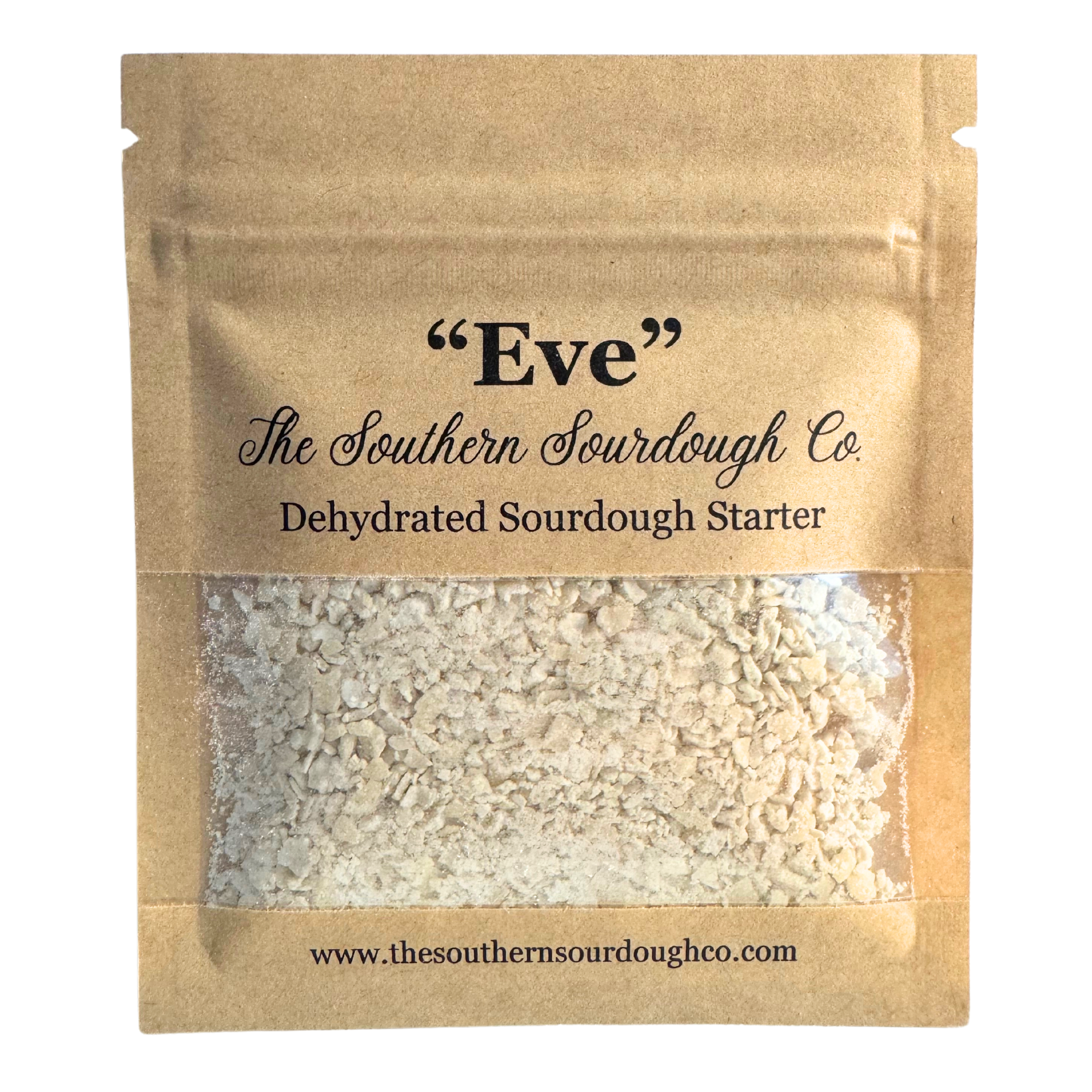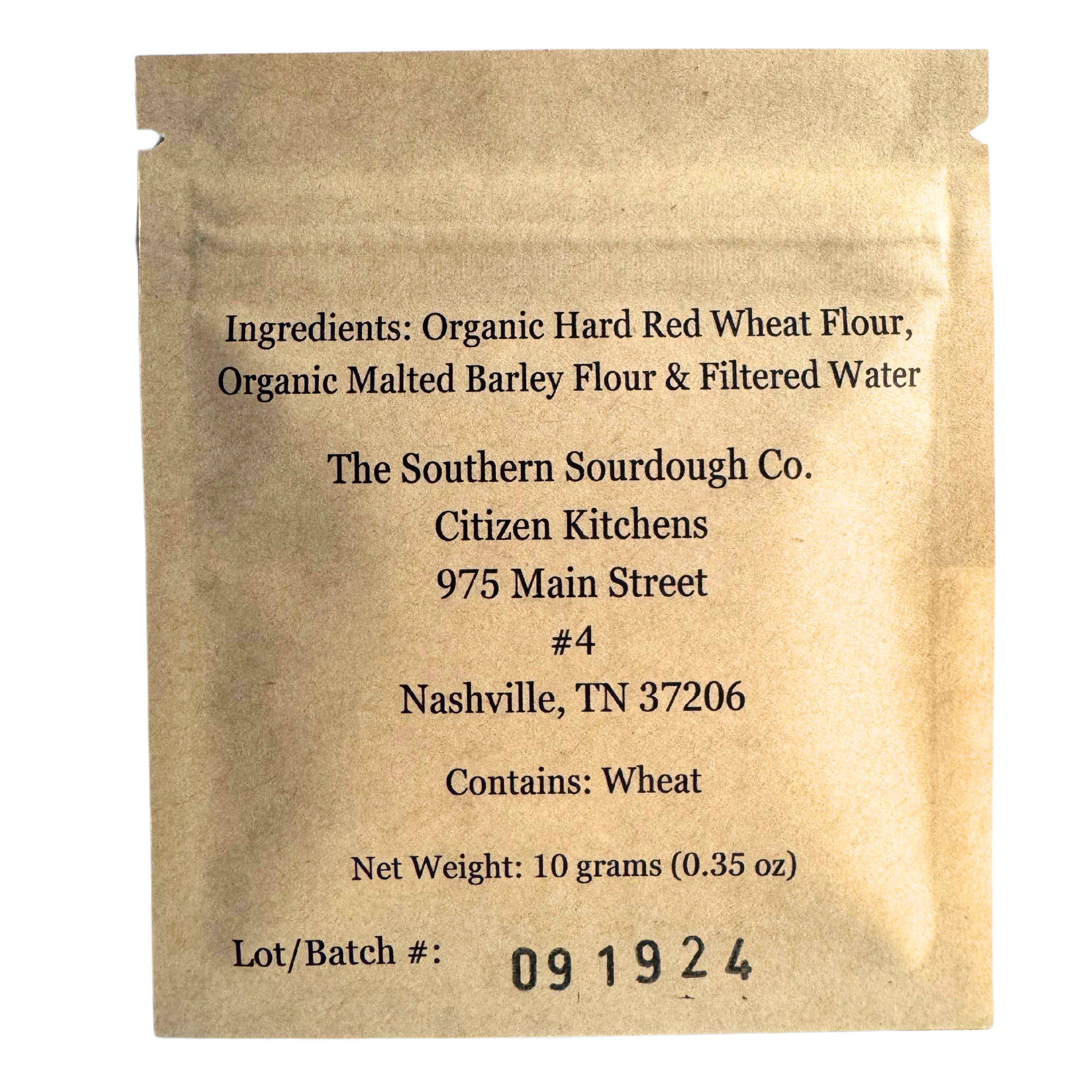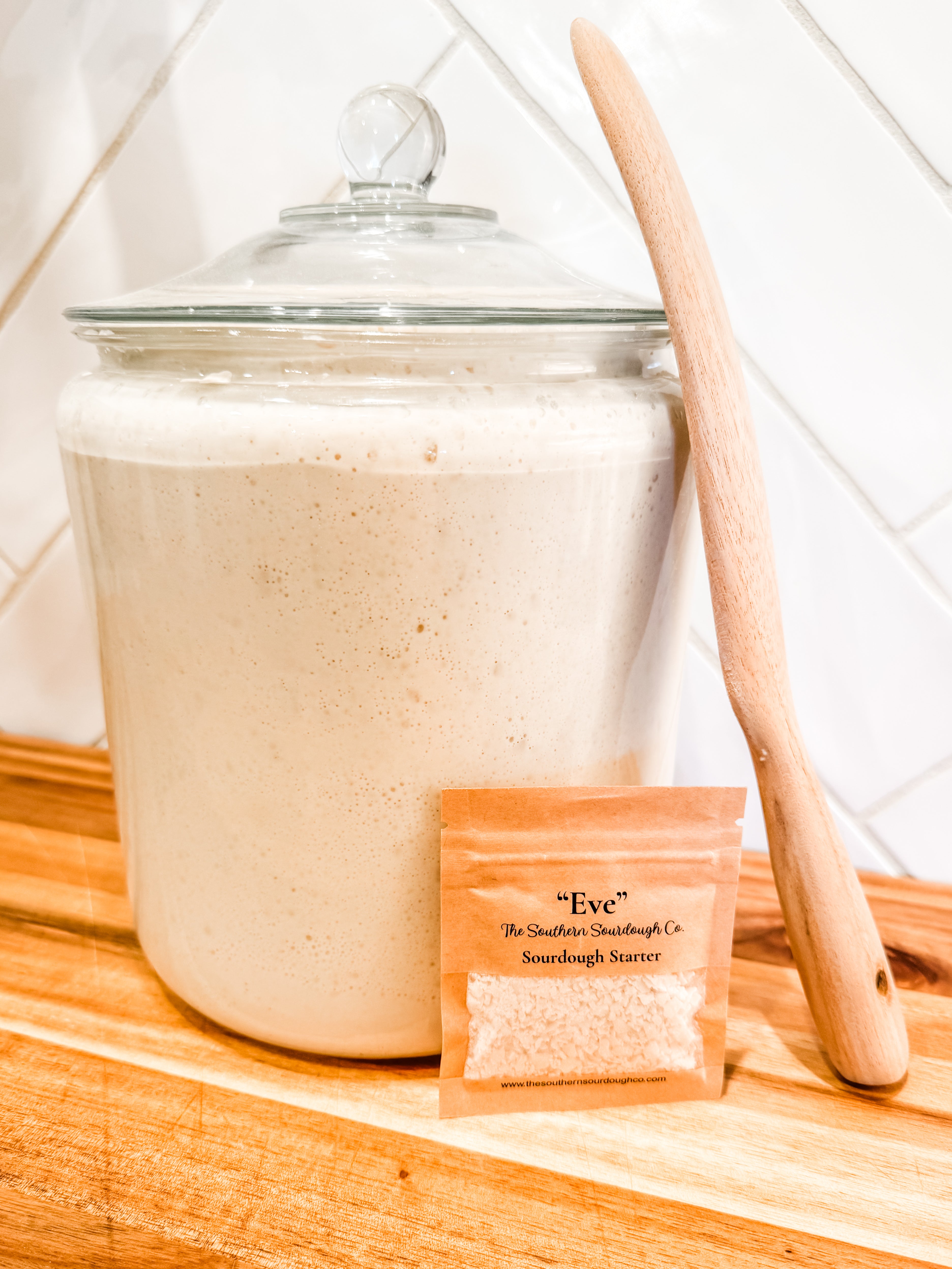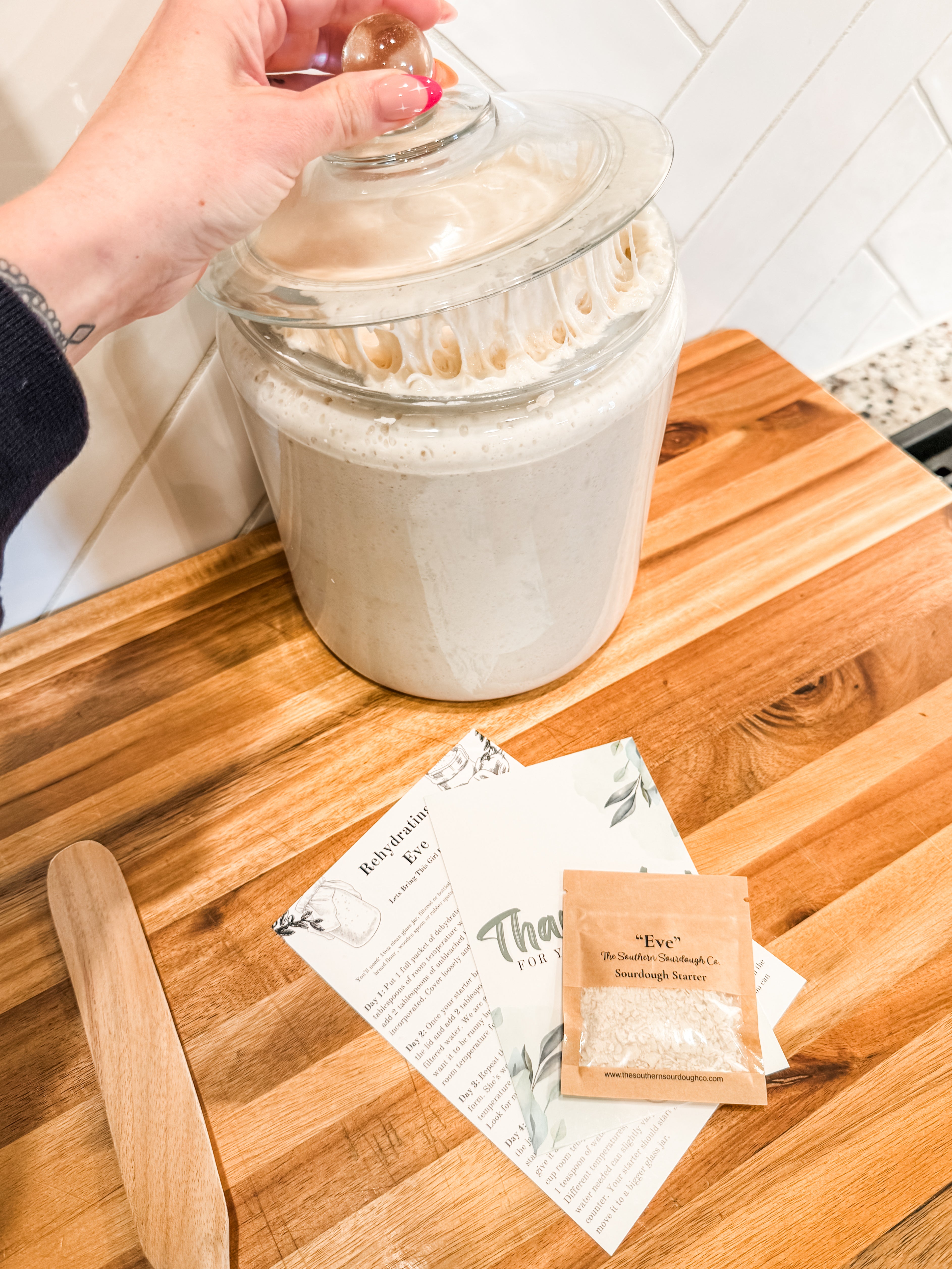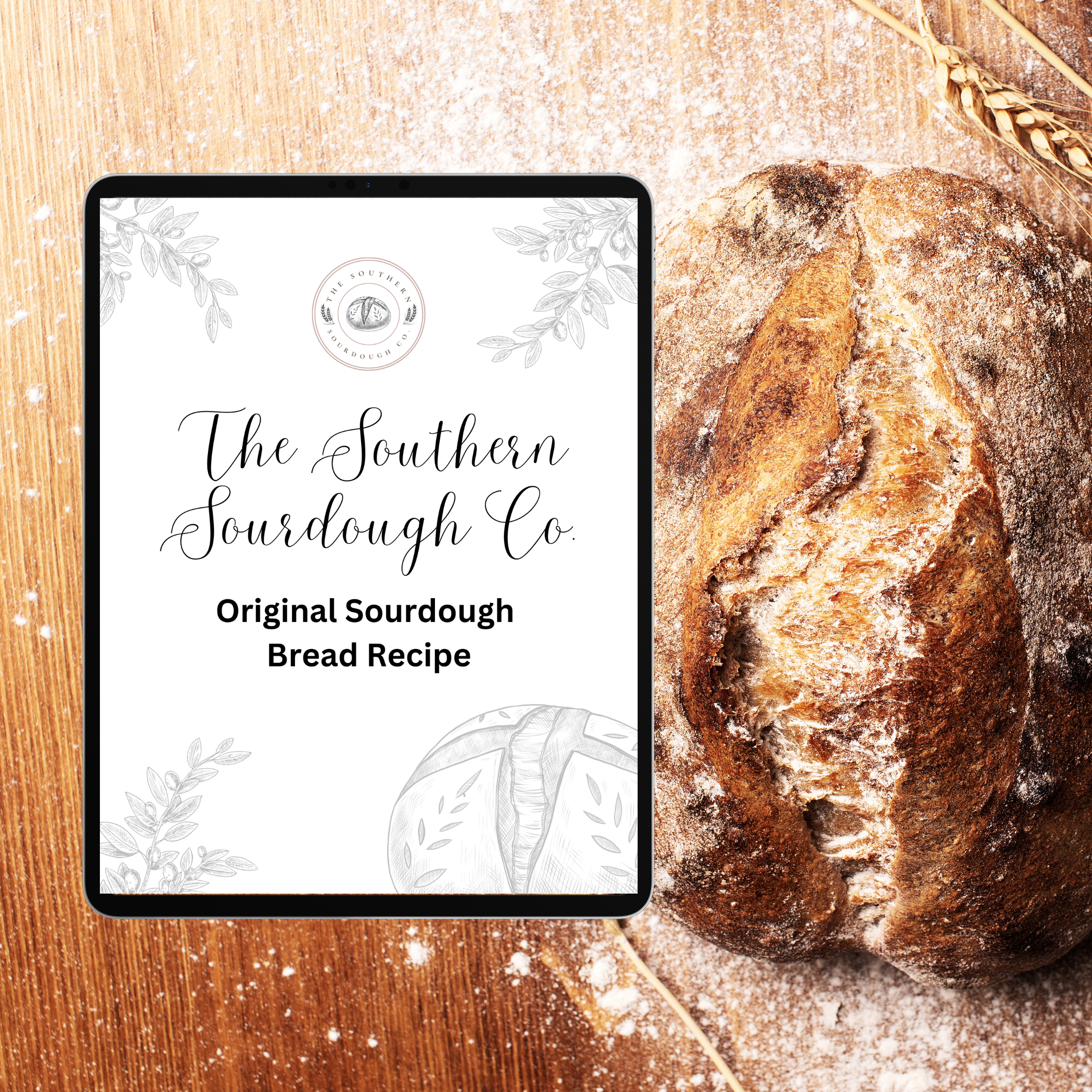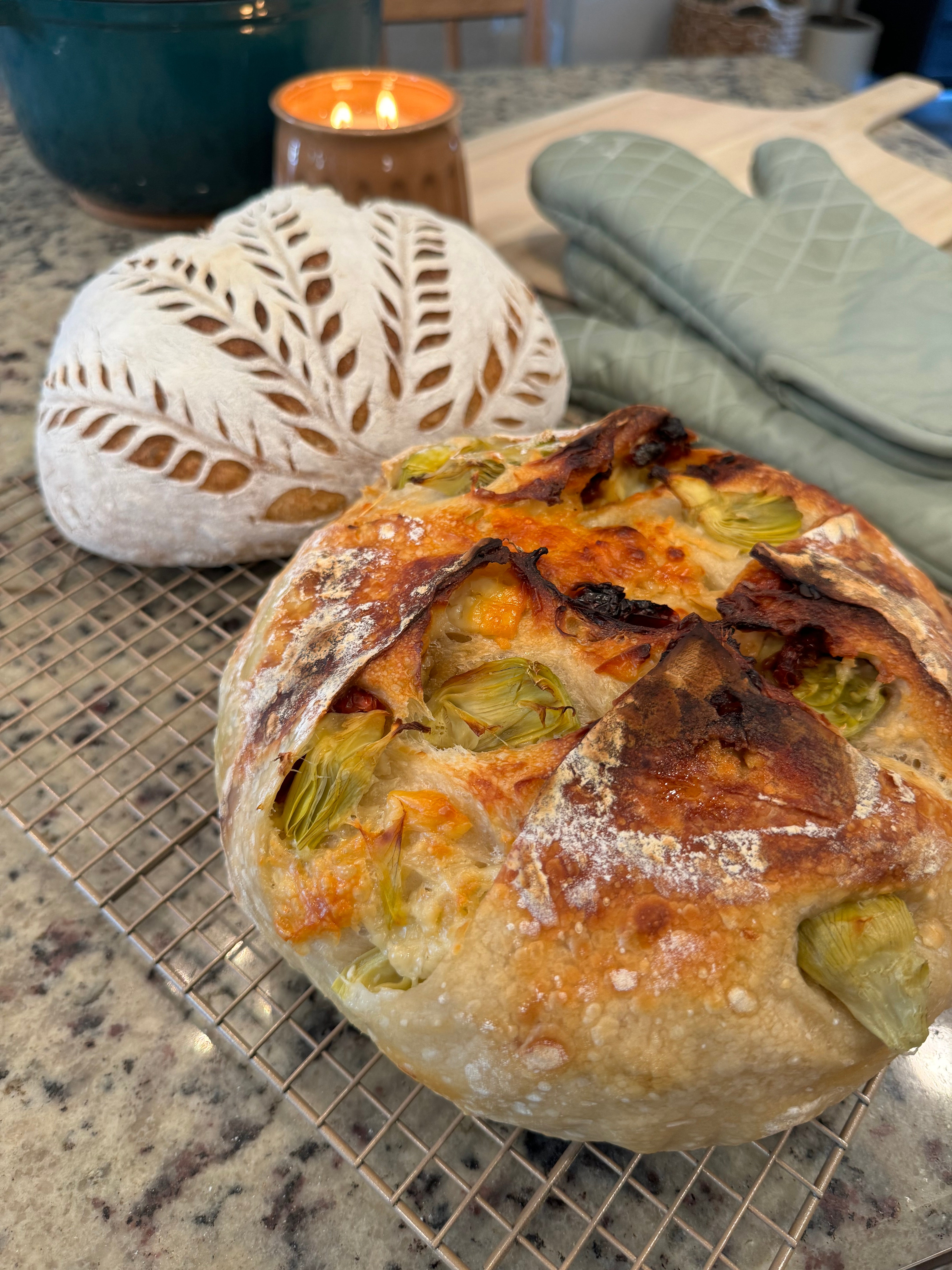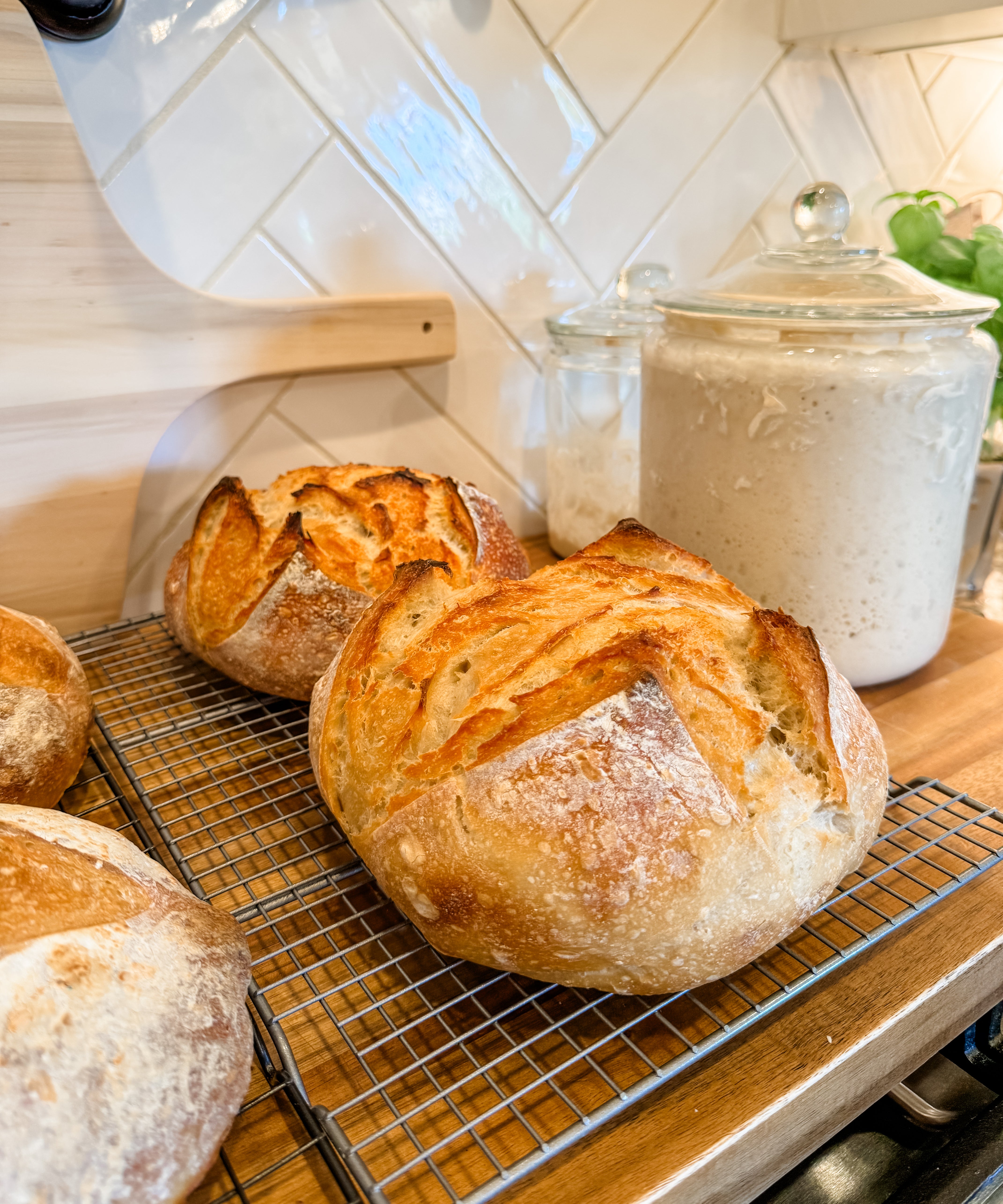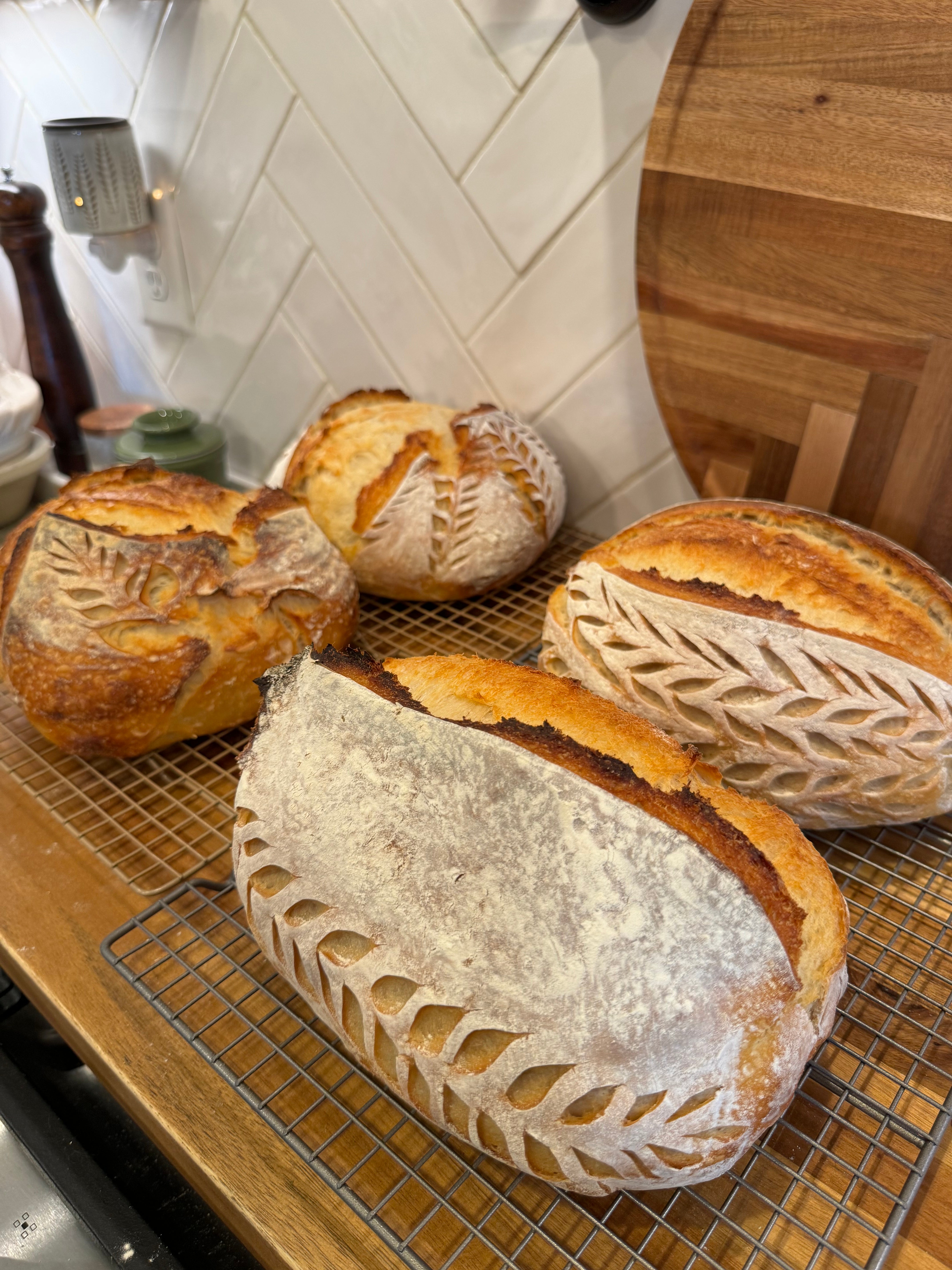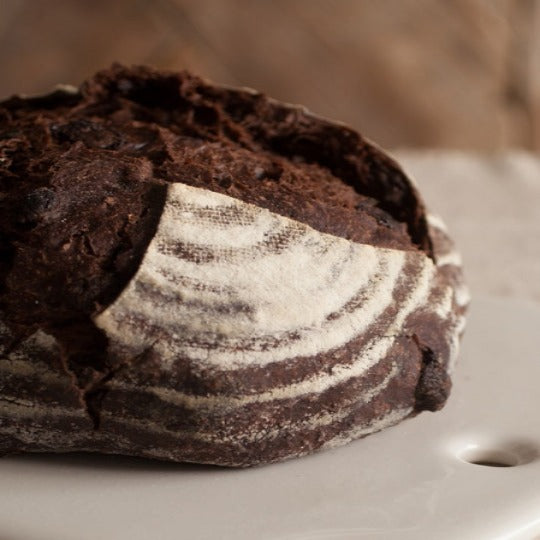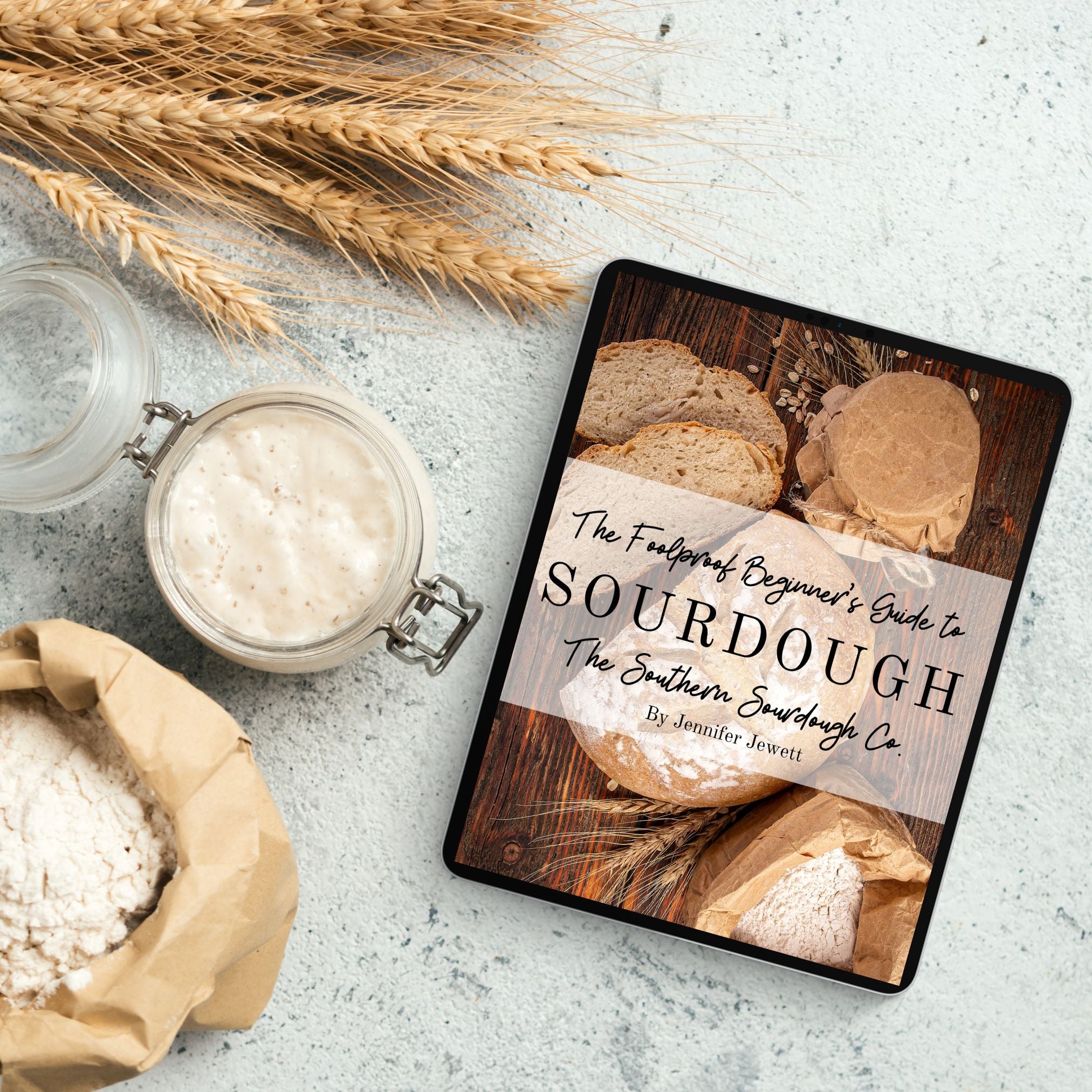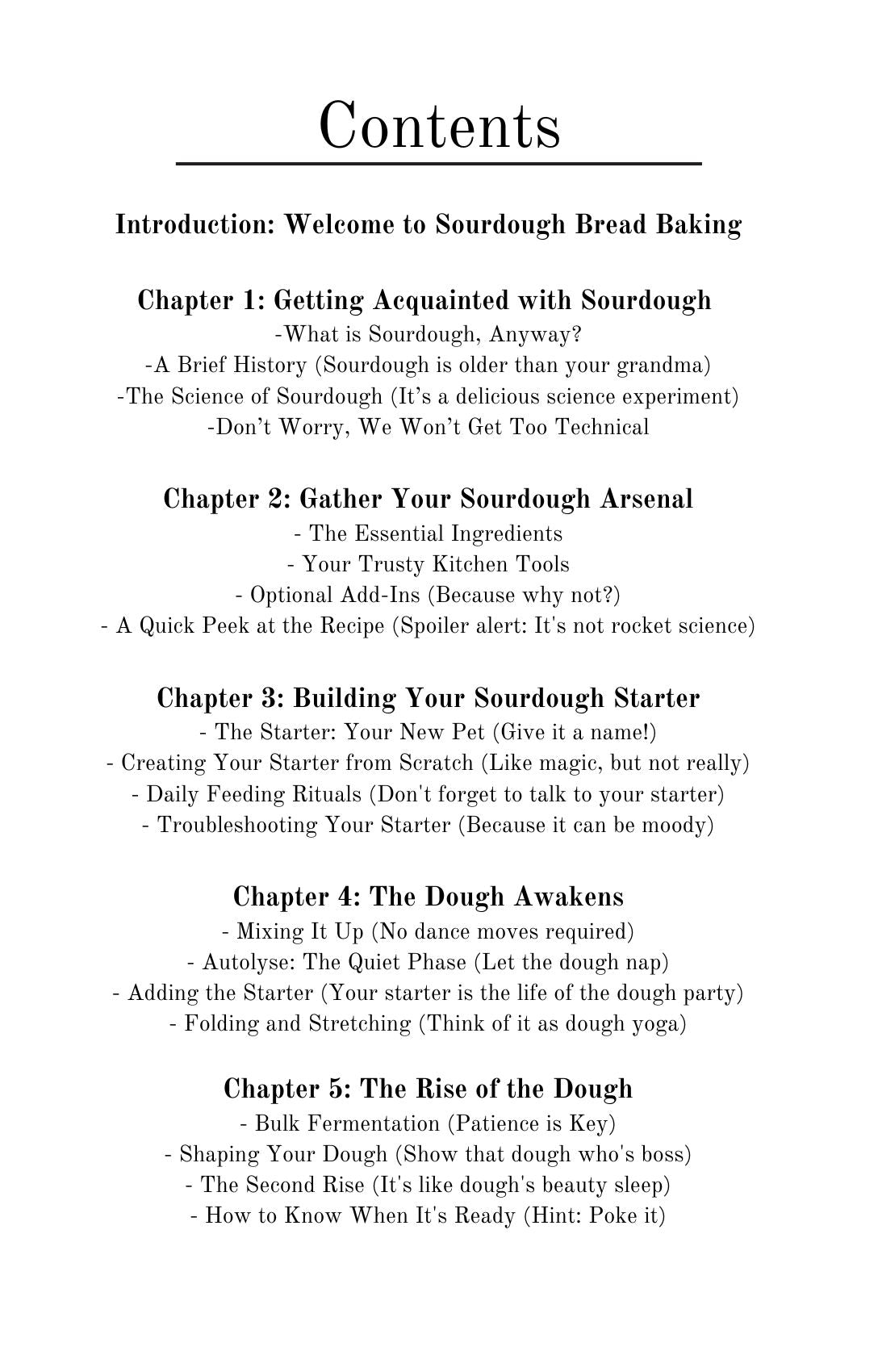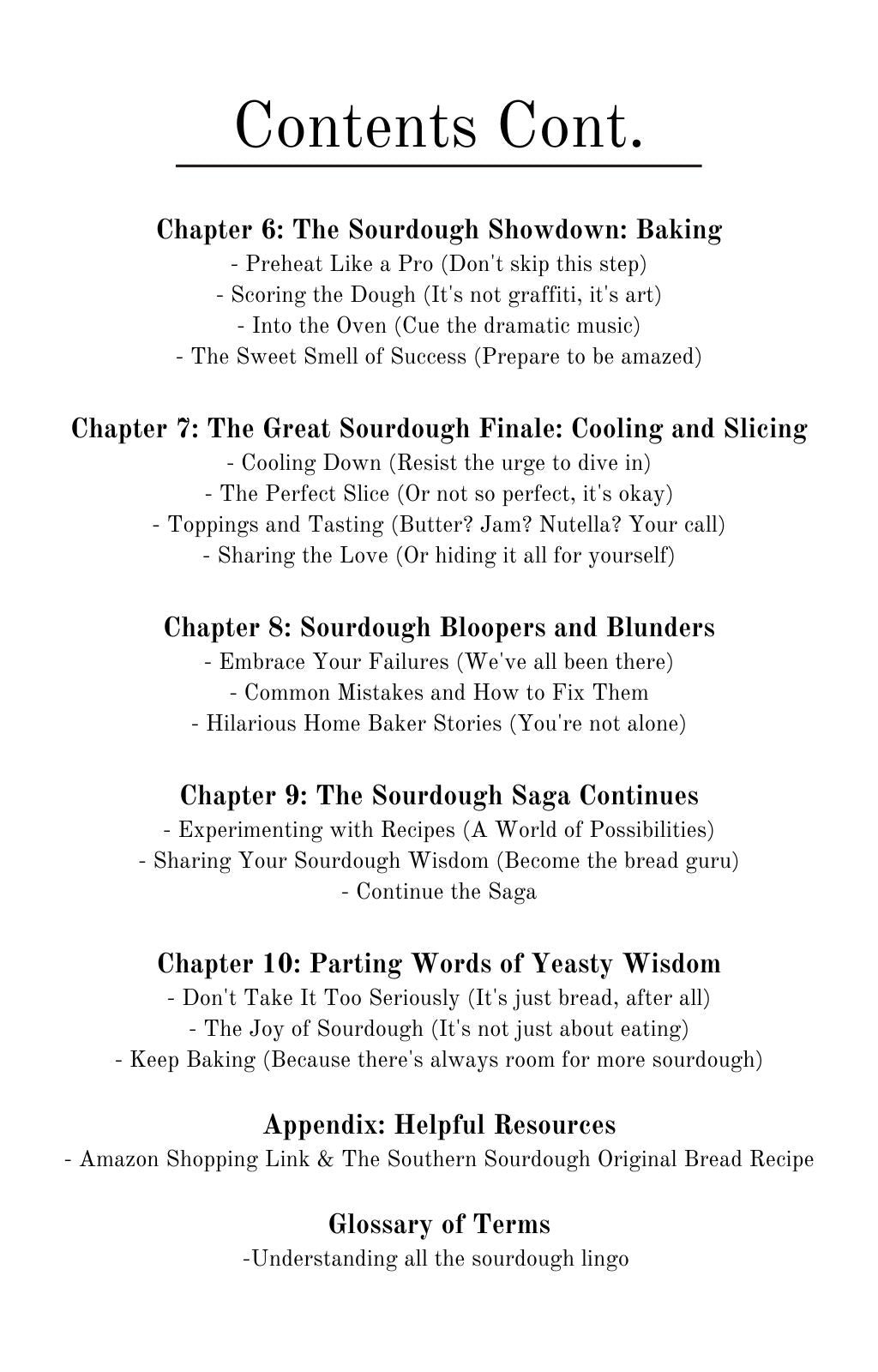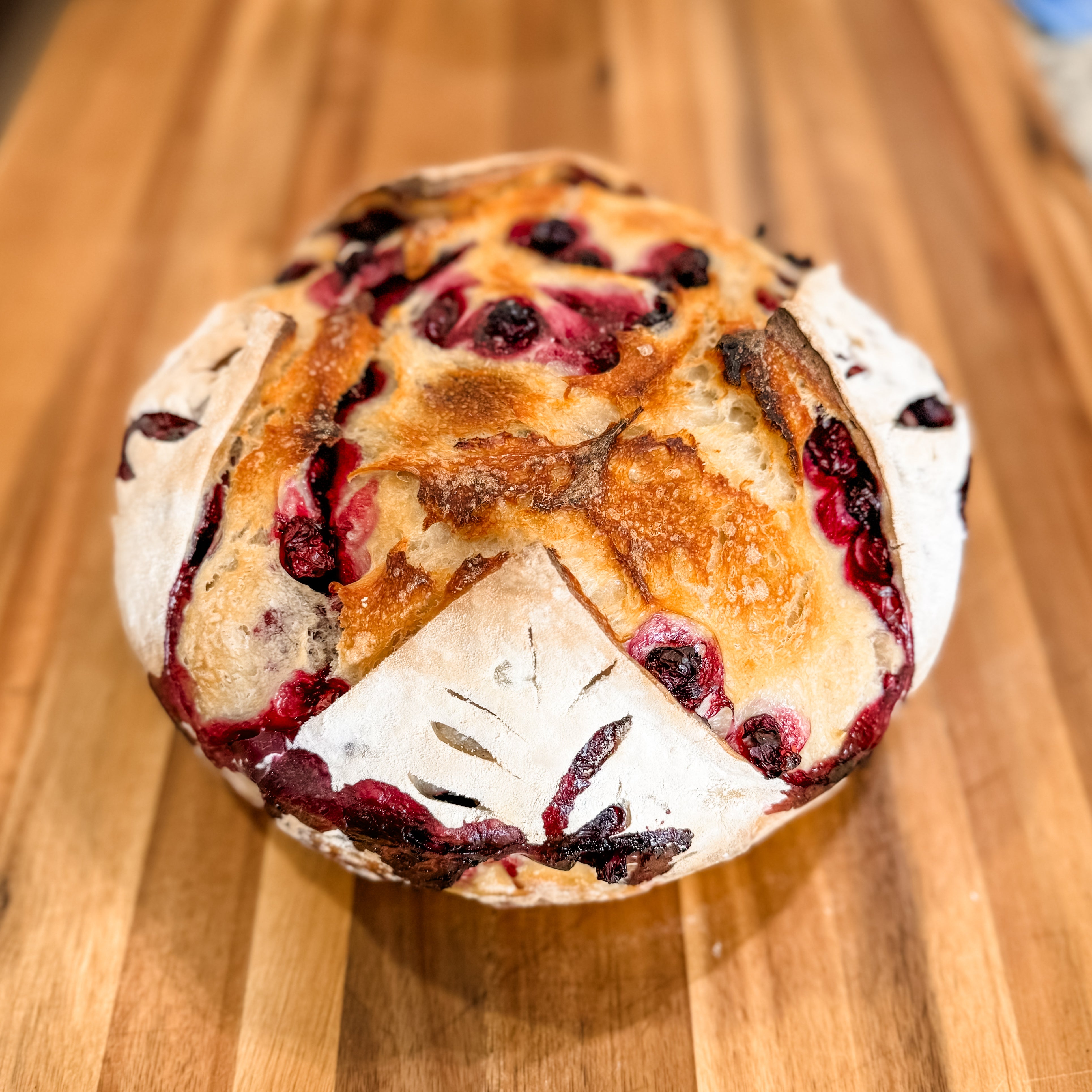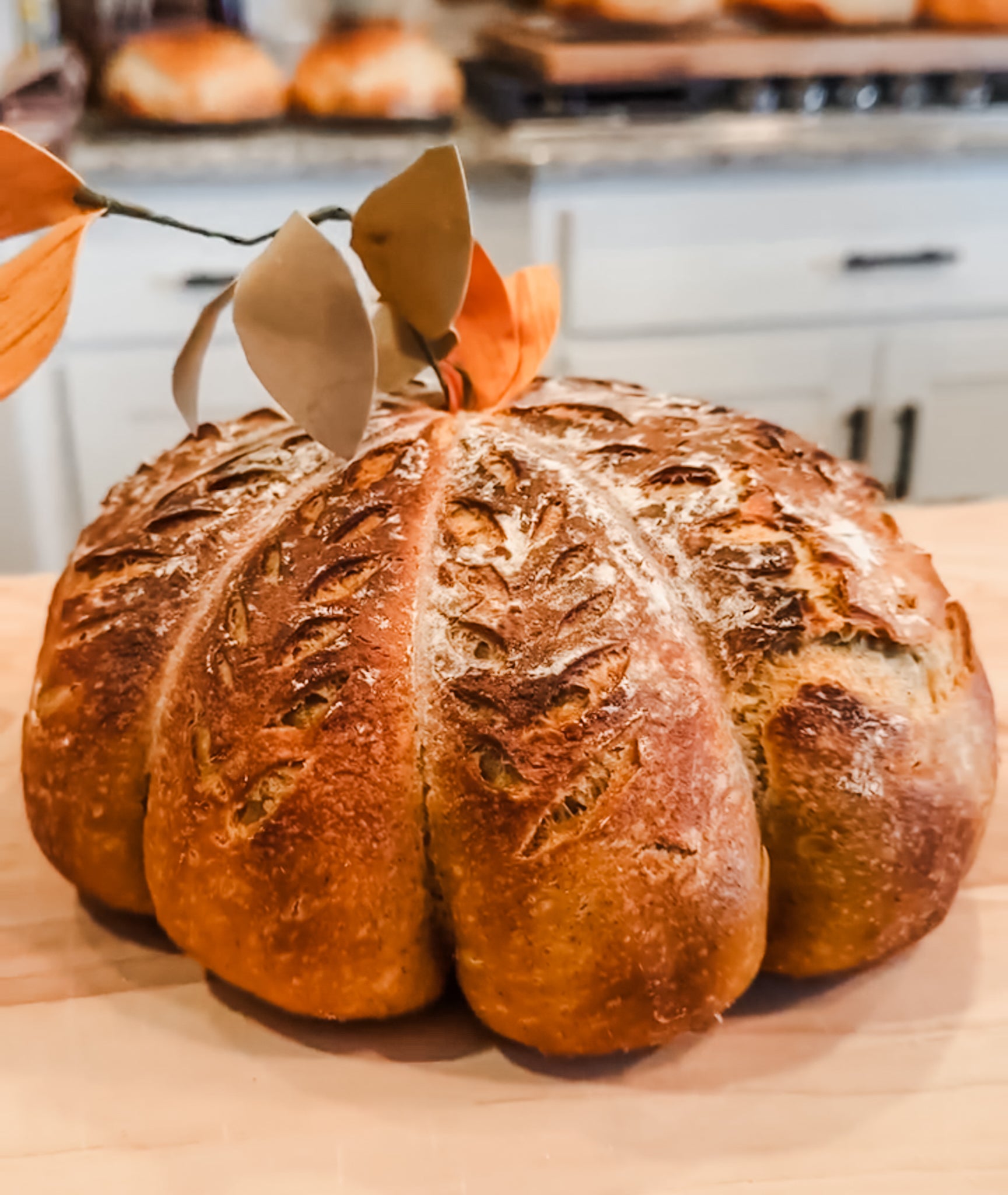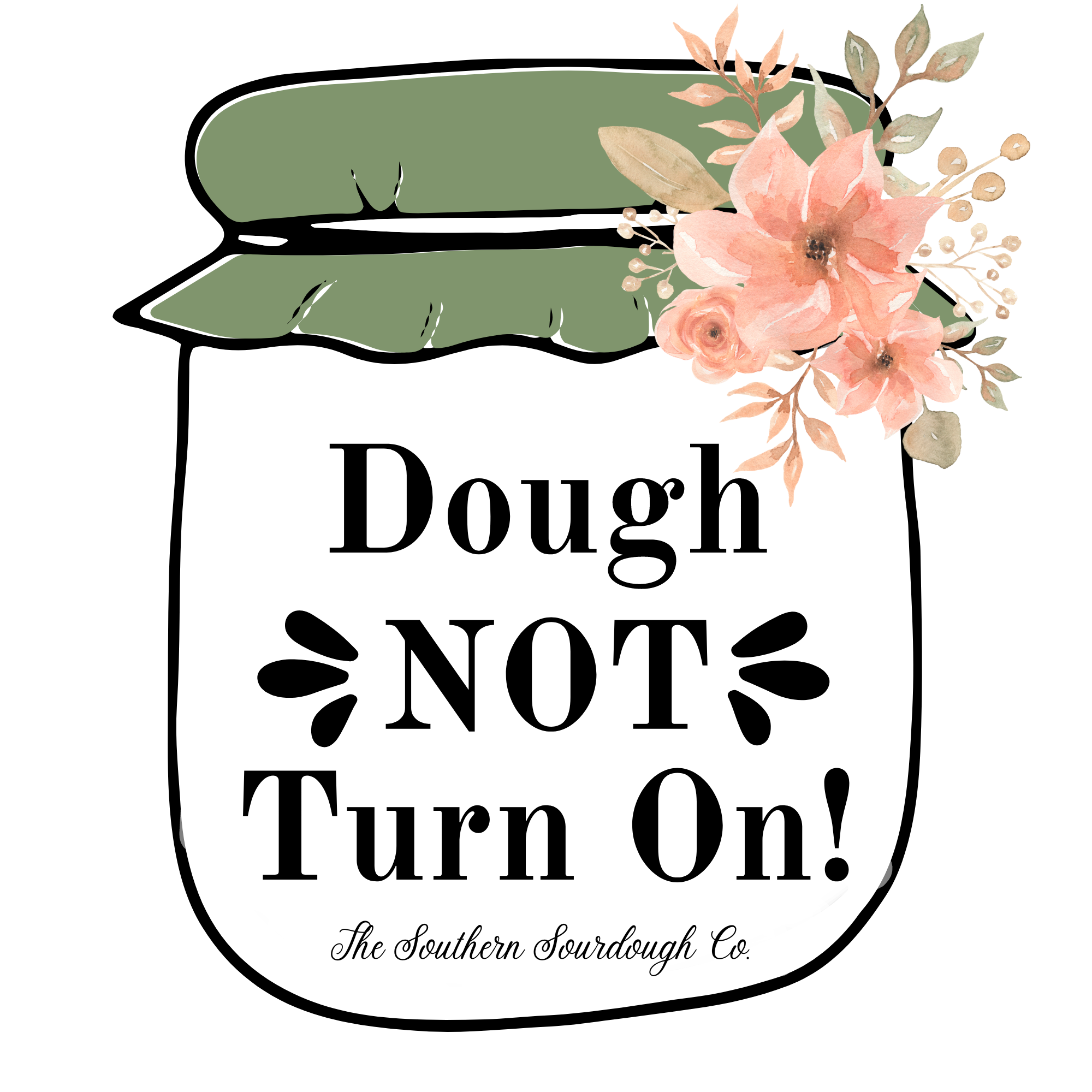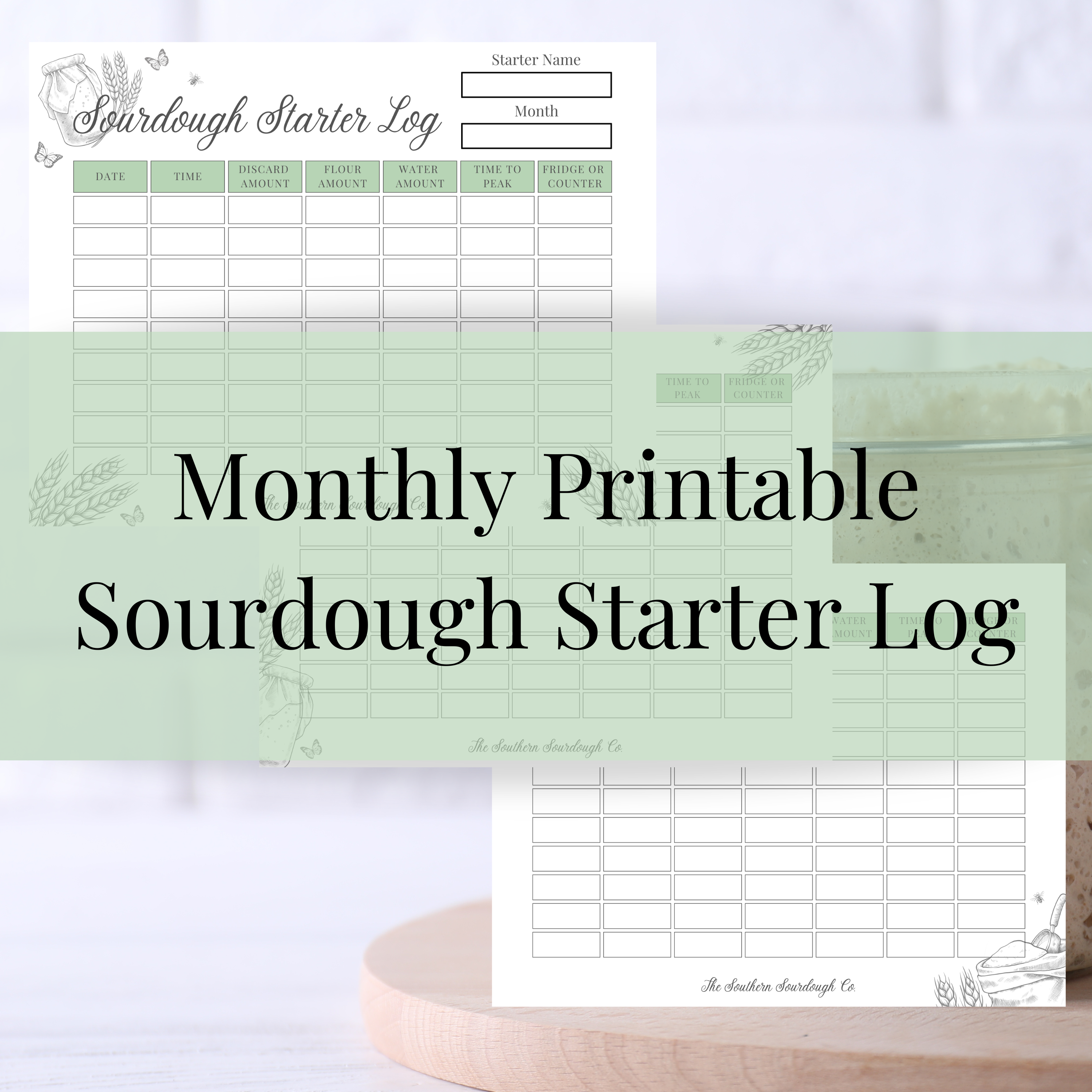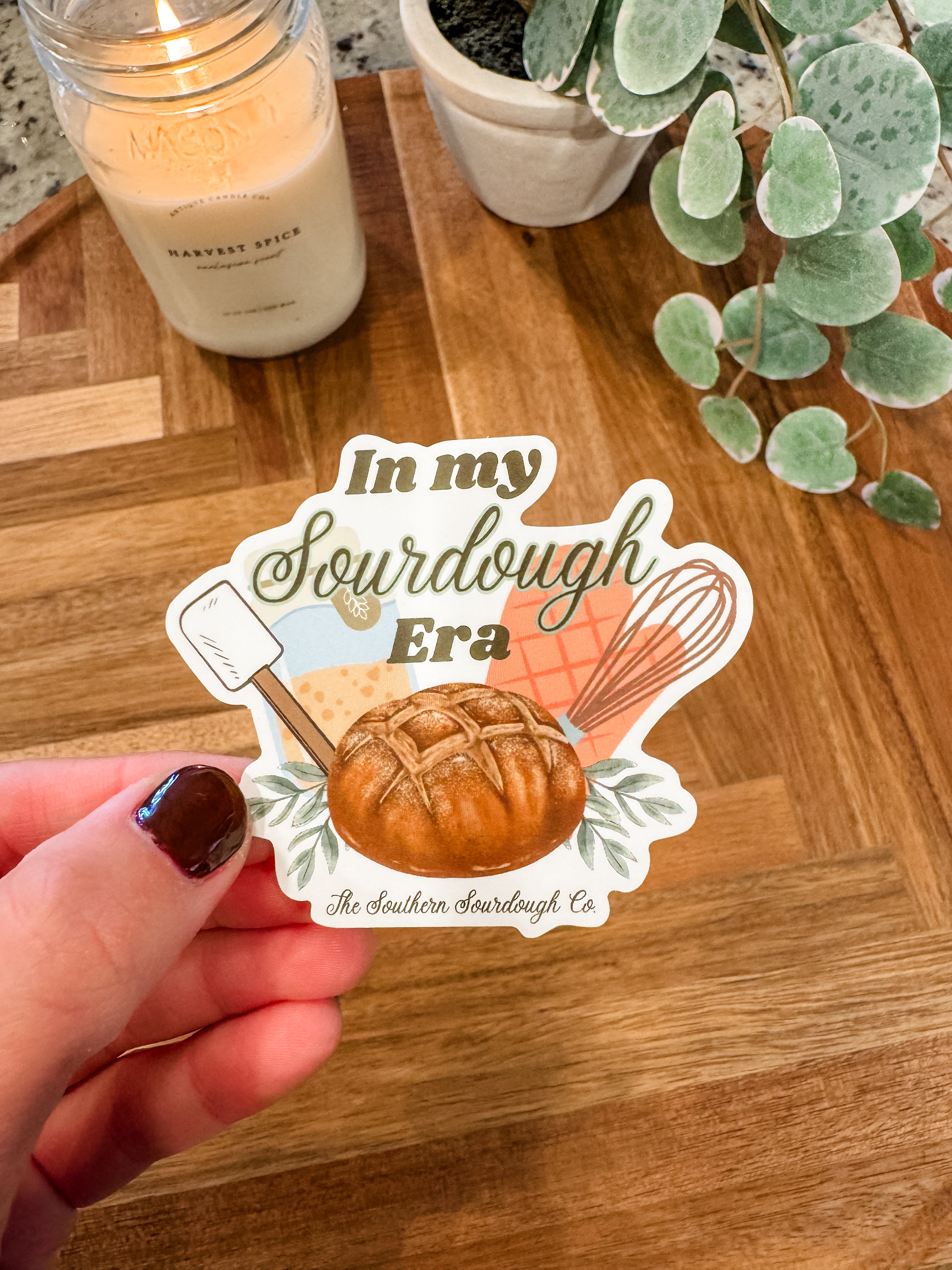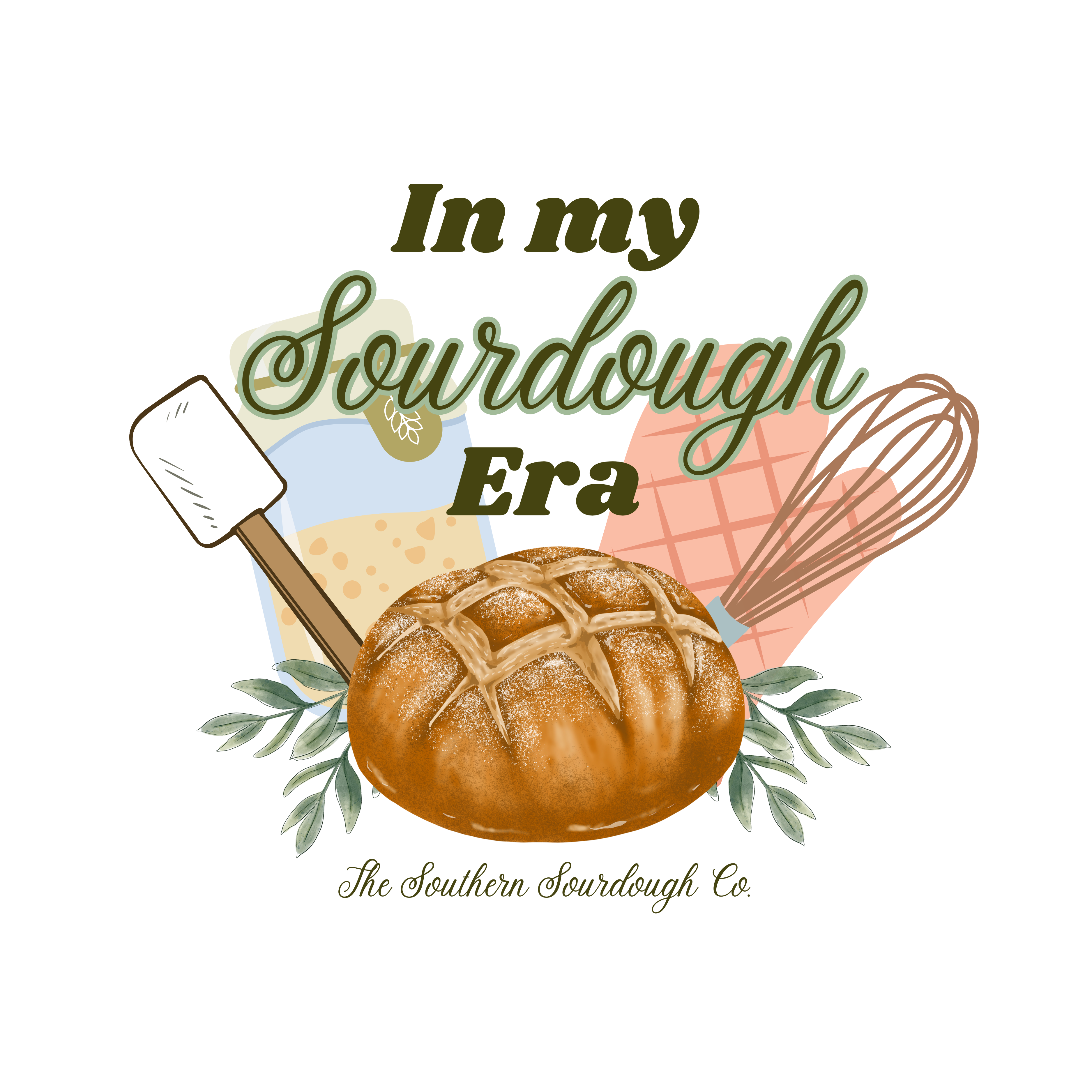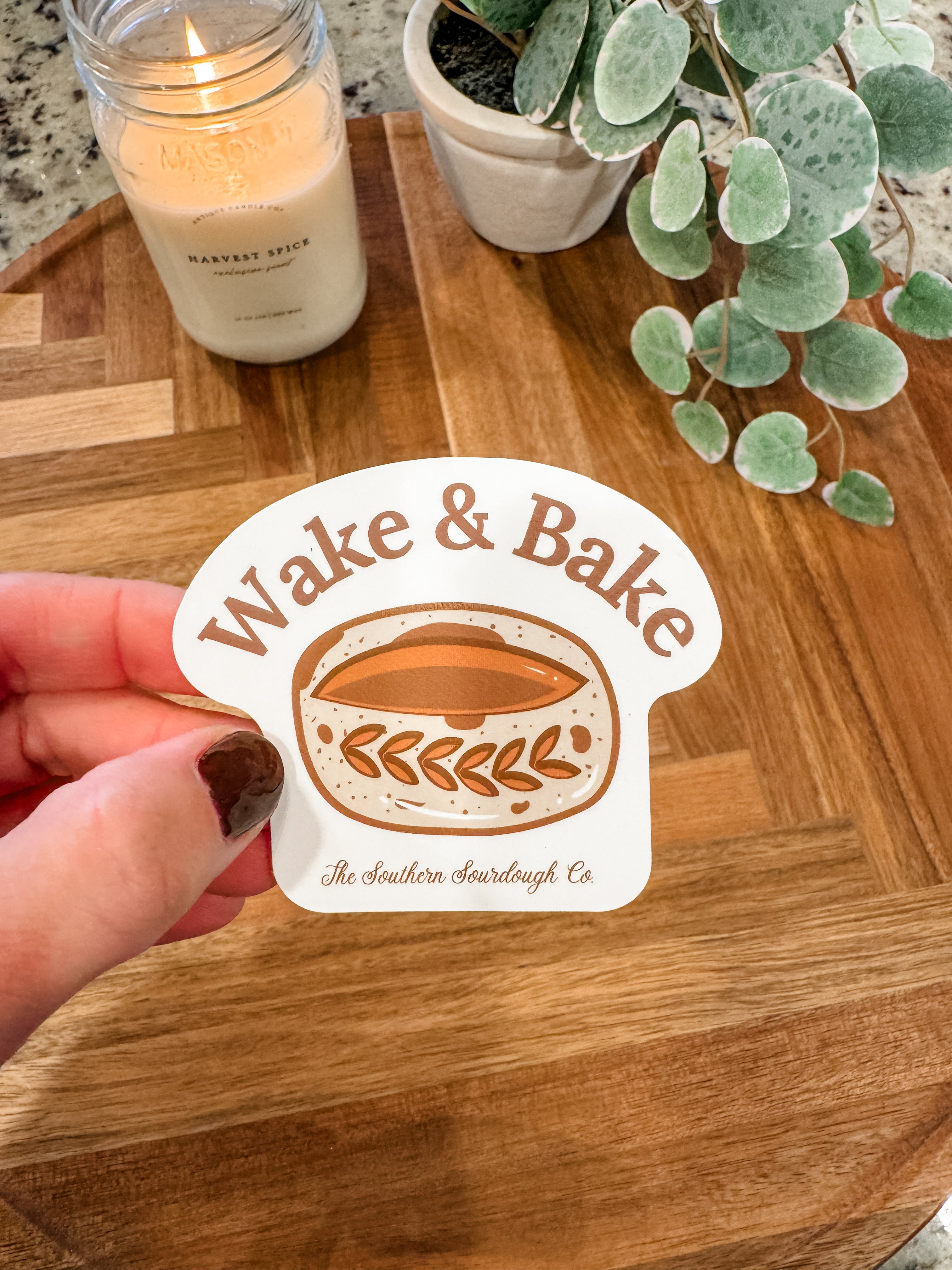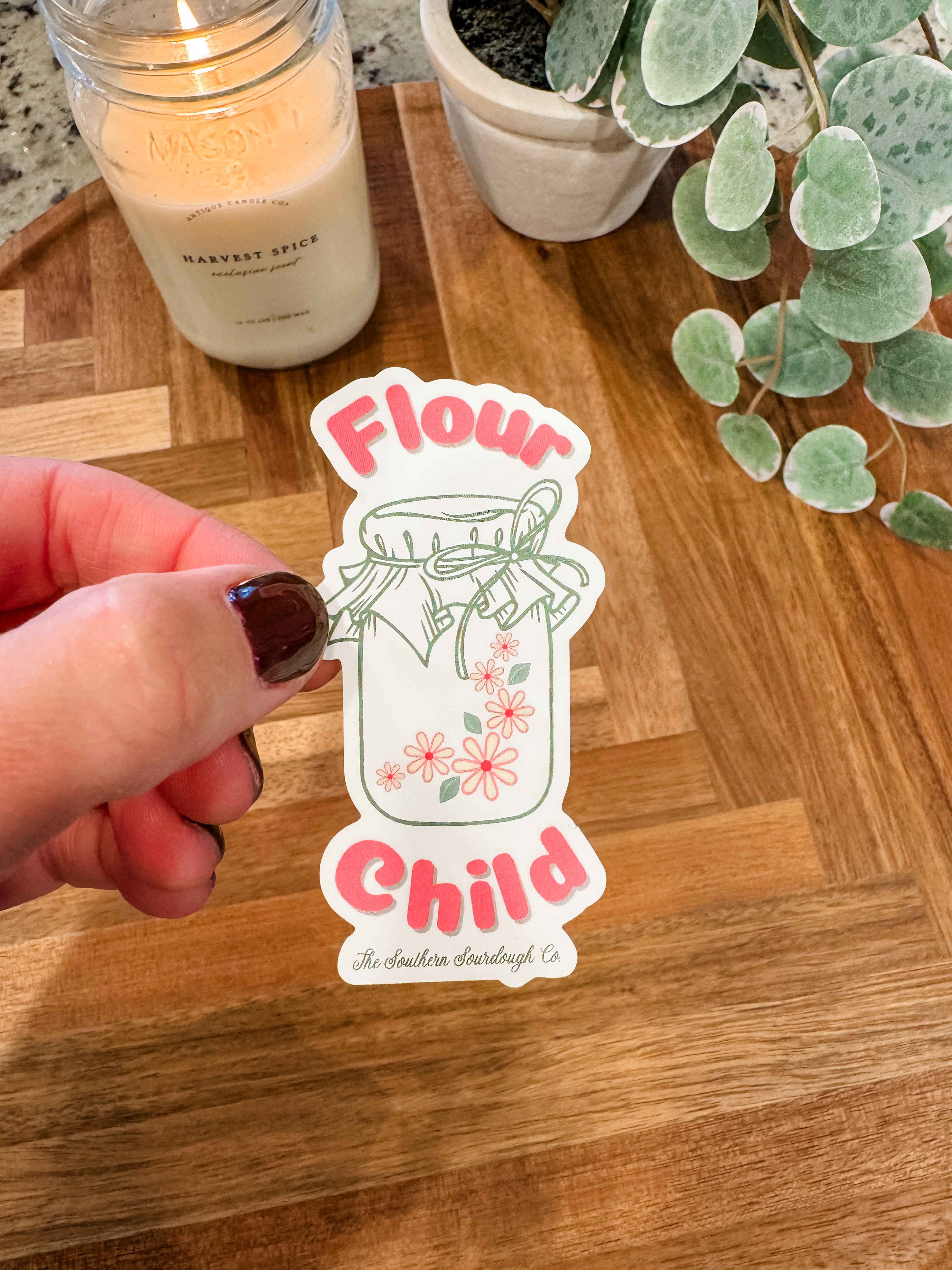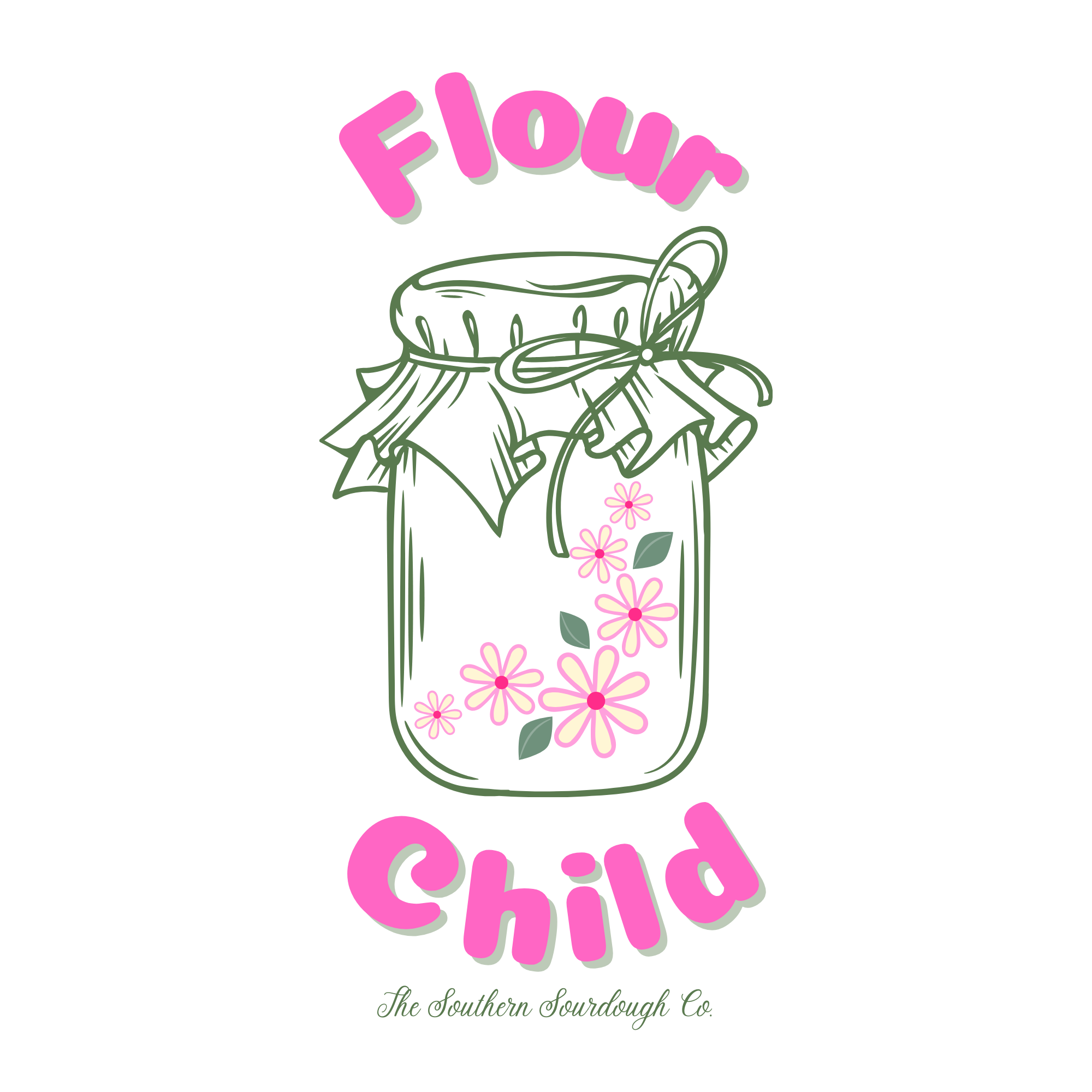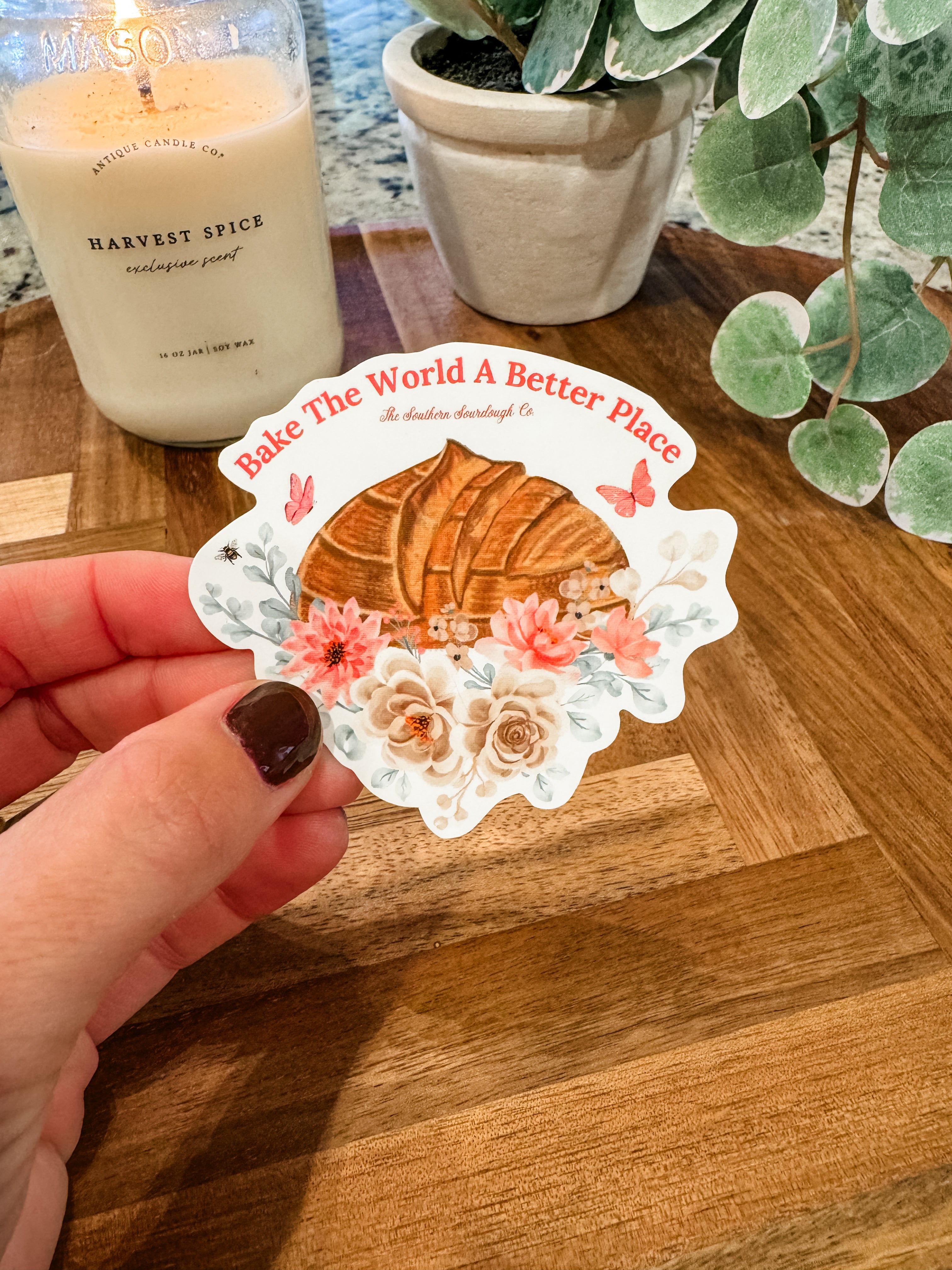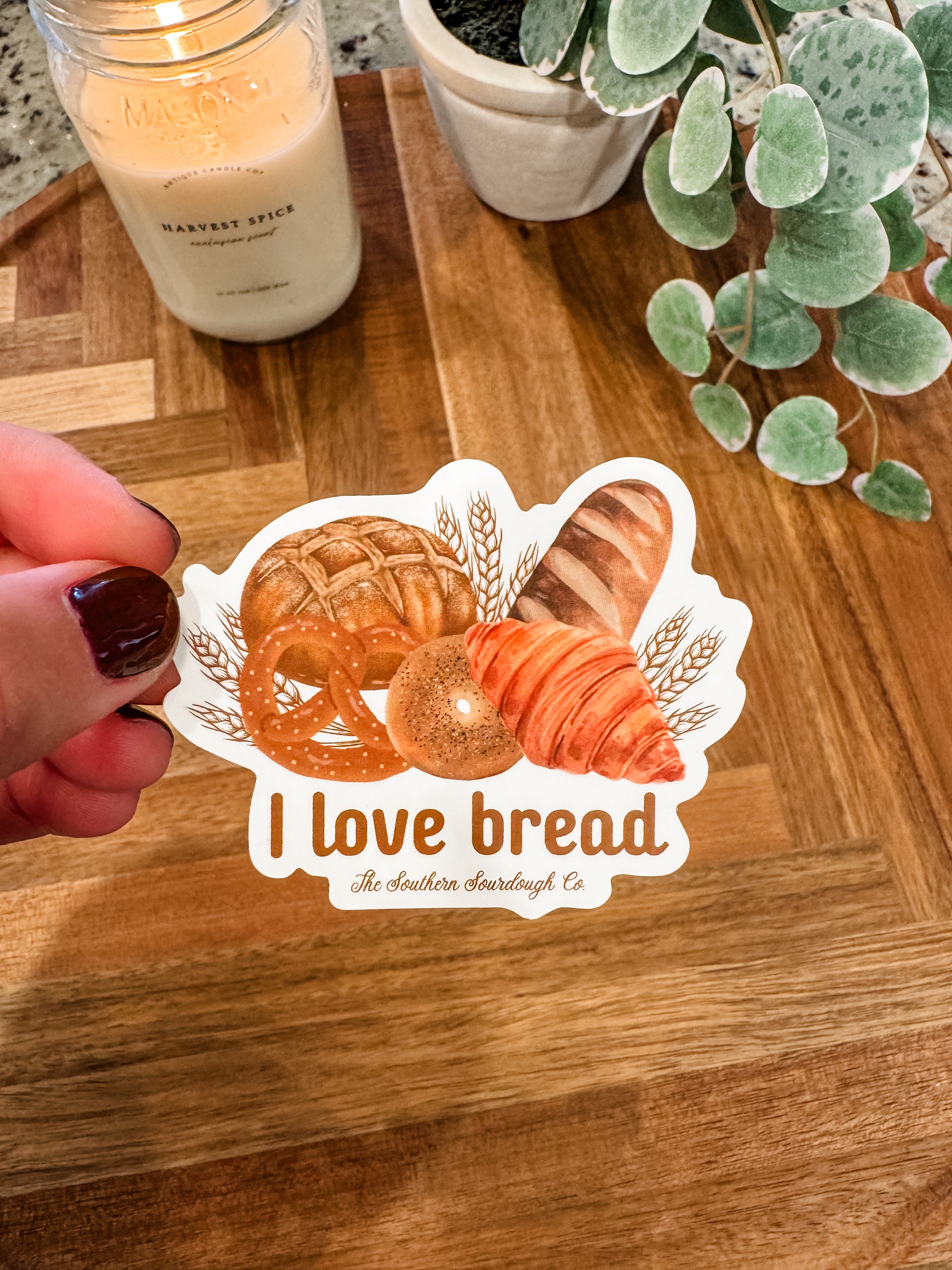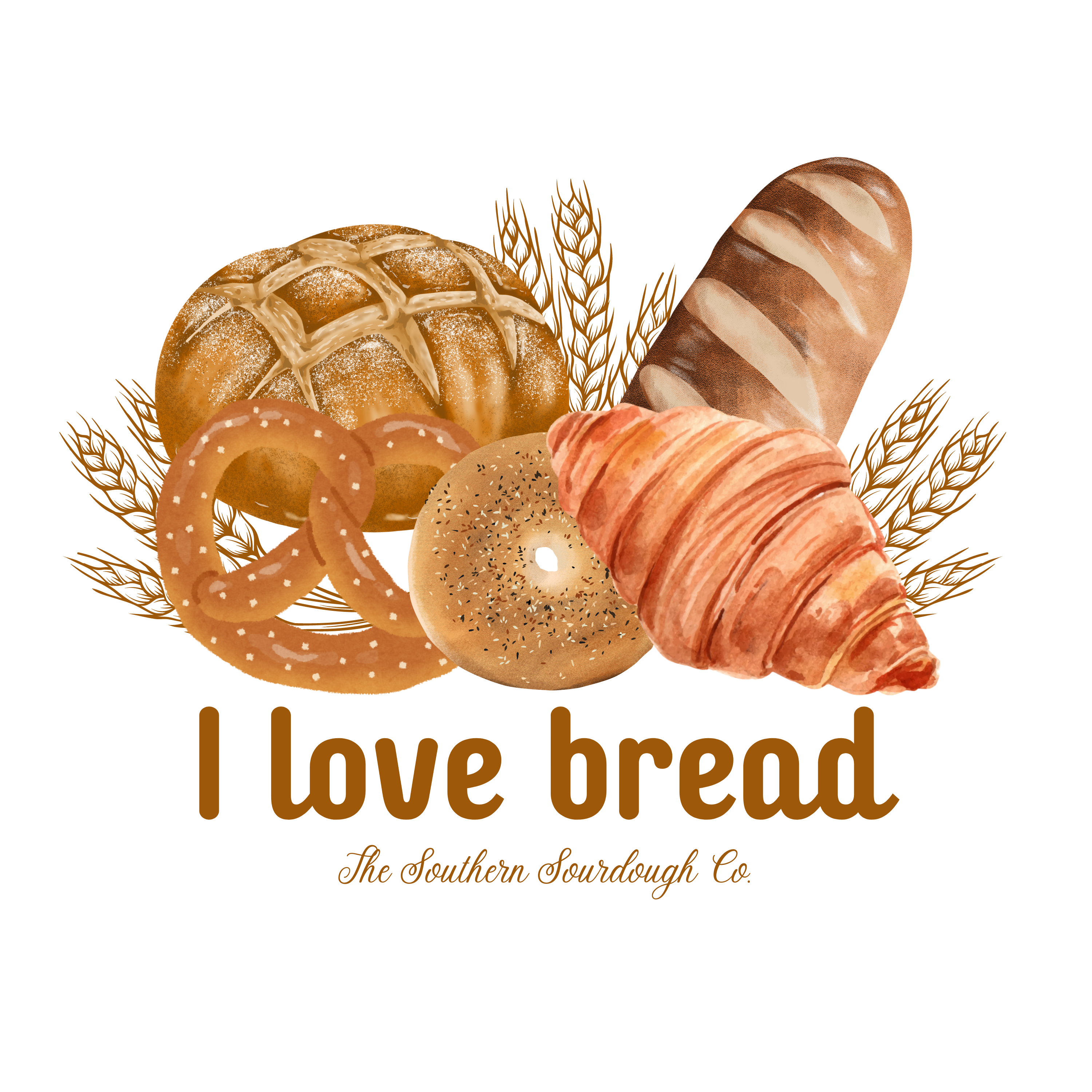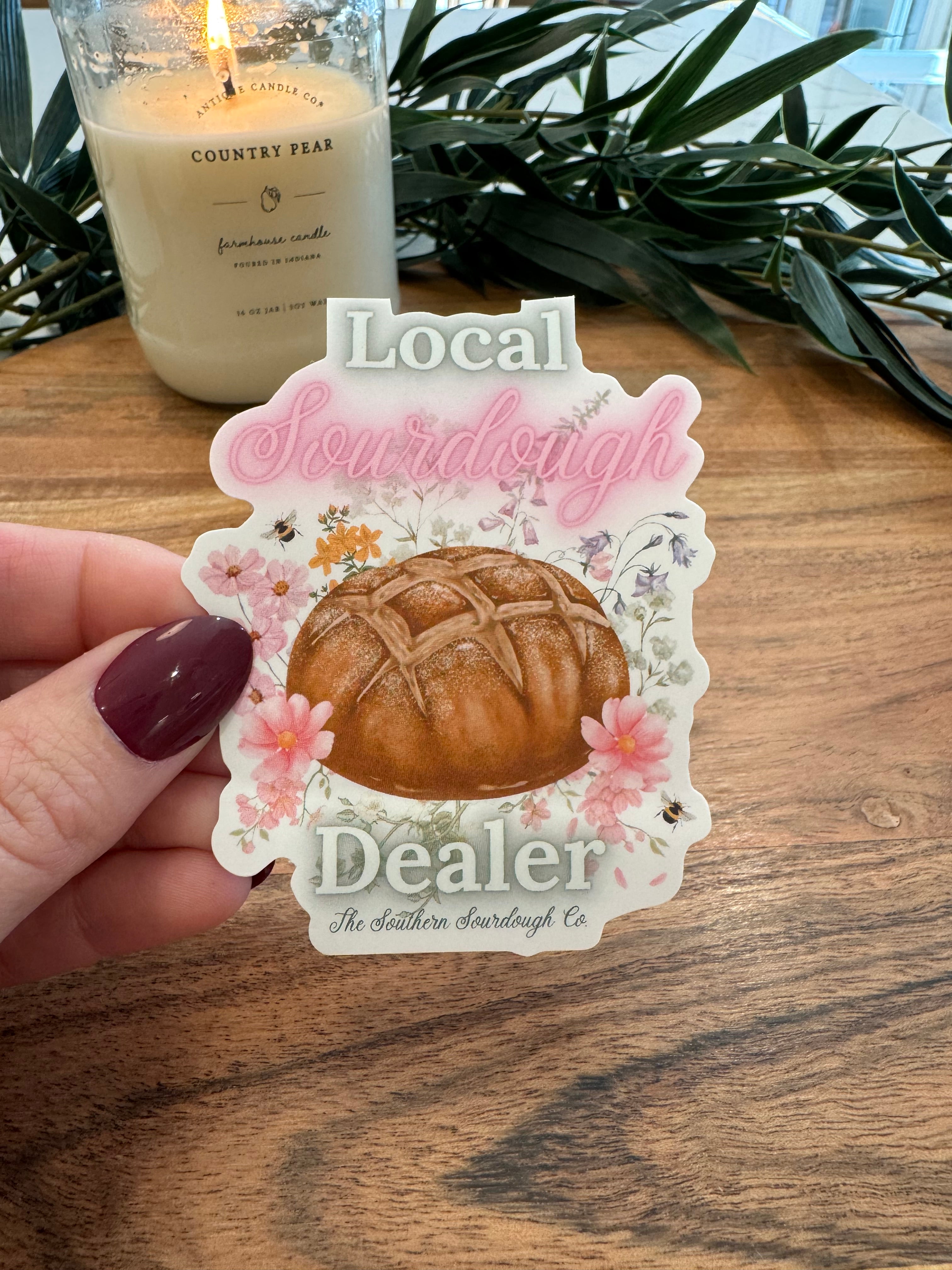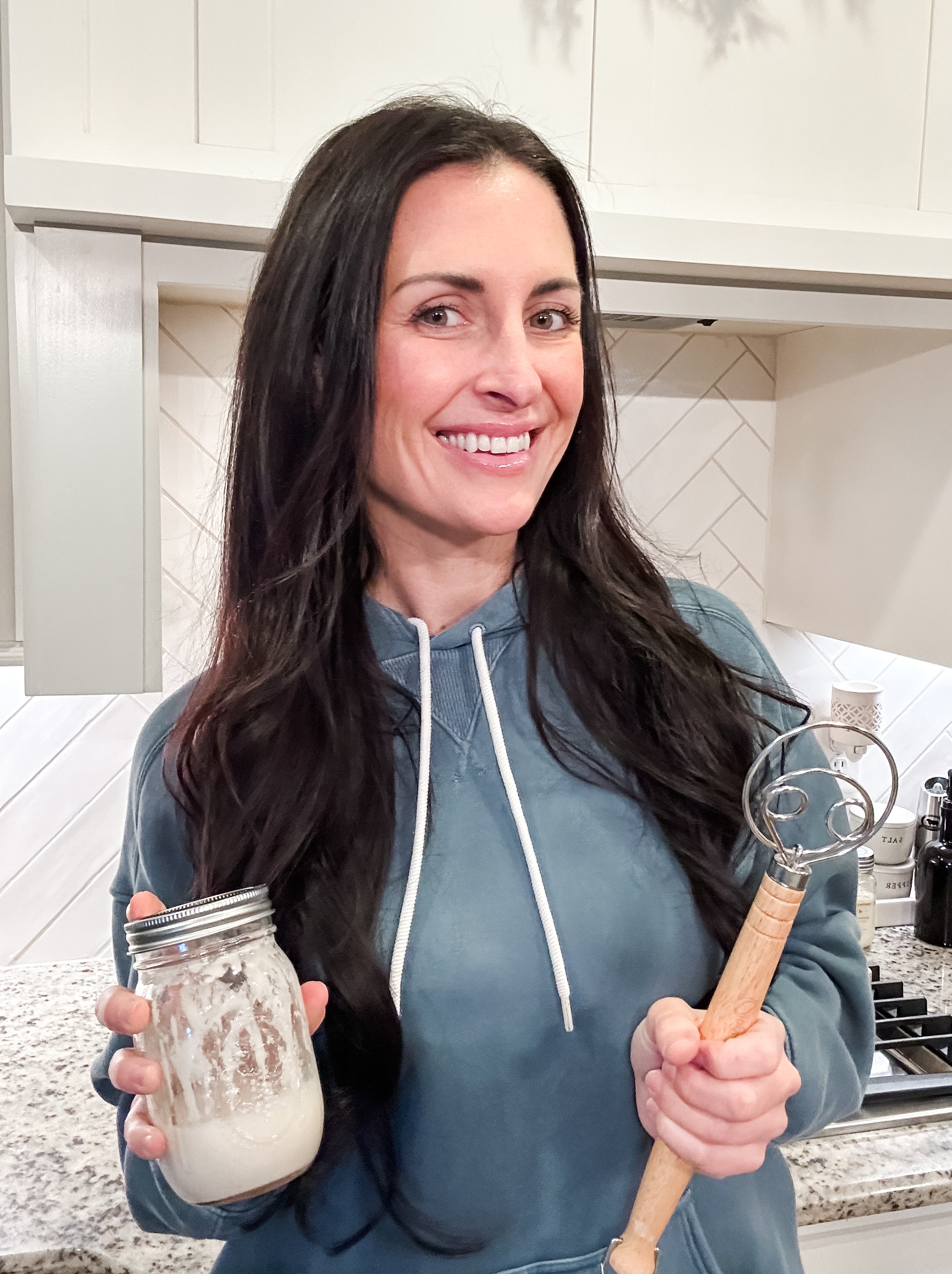
Happy Baking!
I'm Jenn, the founder of The Southern Sourdough Co. I'm so happy you are here! I hope I am able to help you find confidence in your sourdough journey and step outside your baking comfort zone. Let's simplify sourdough and help you bake beautiful bread right in your own kitchen.
Let customers speak for us
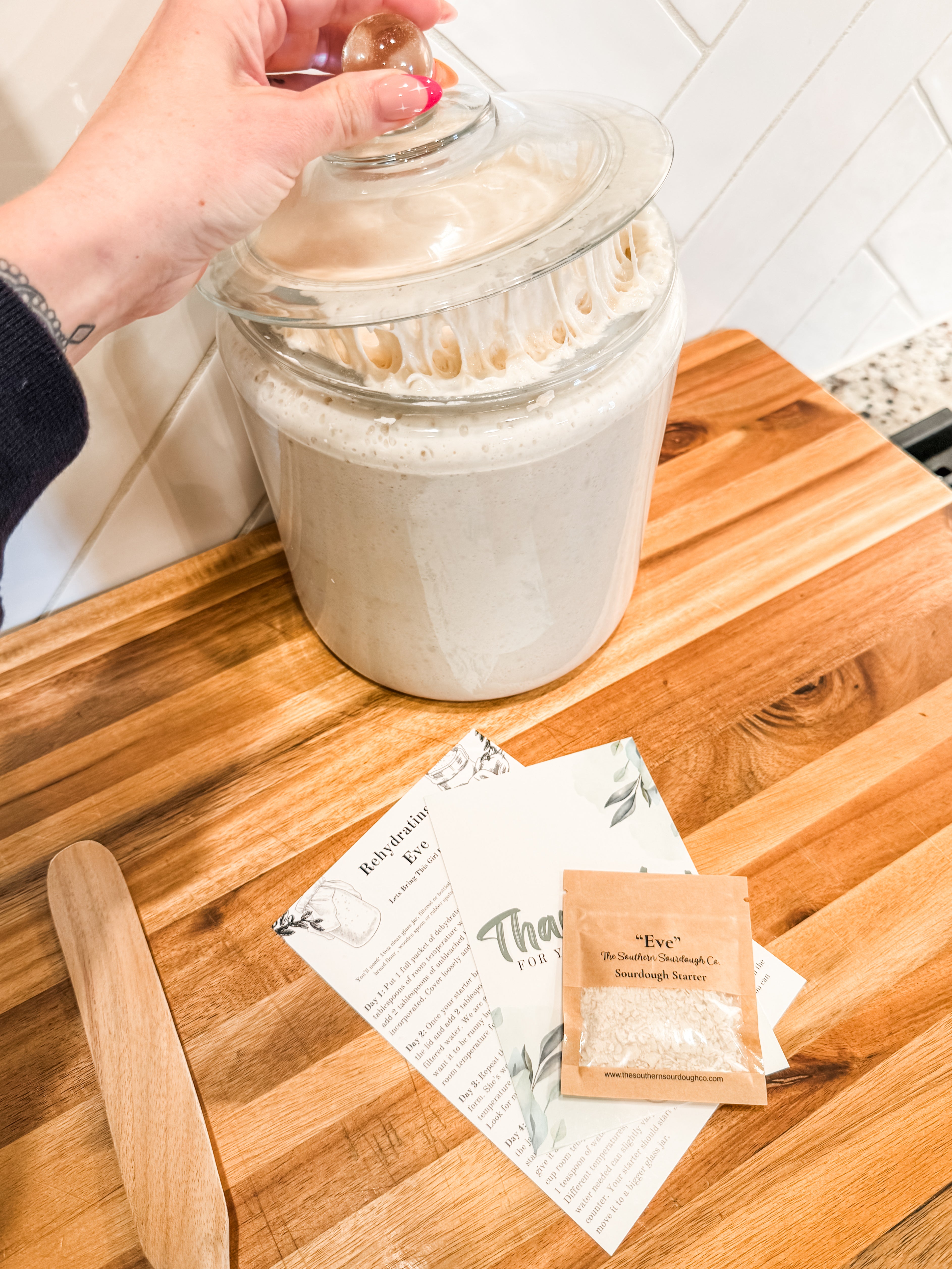
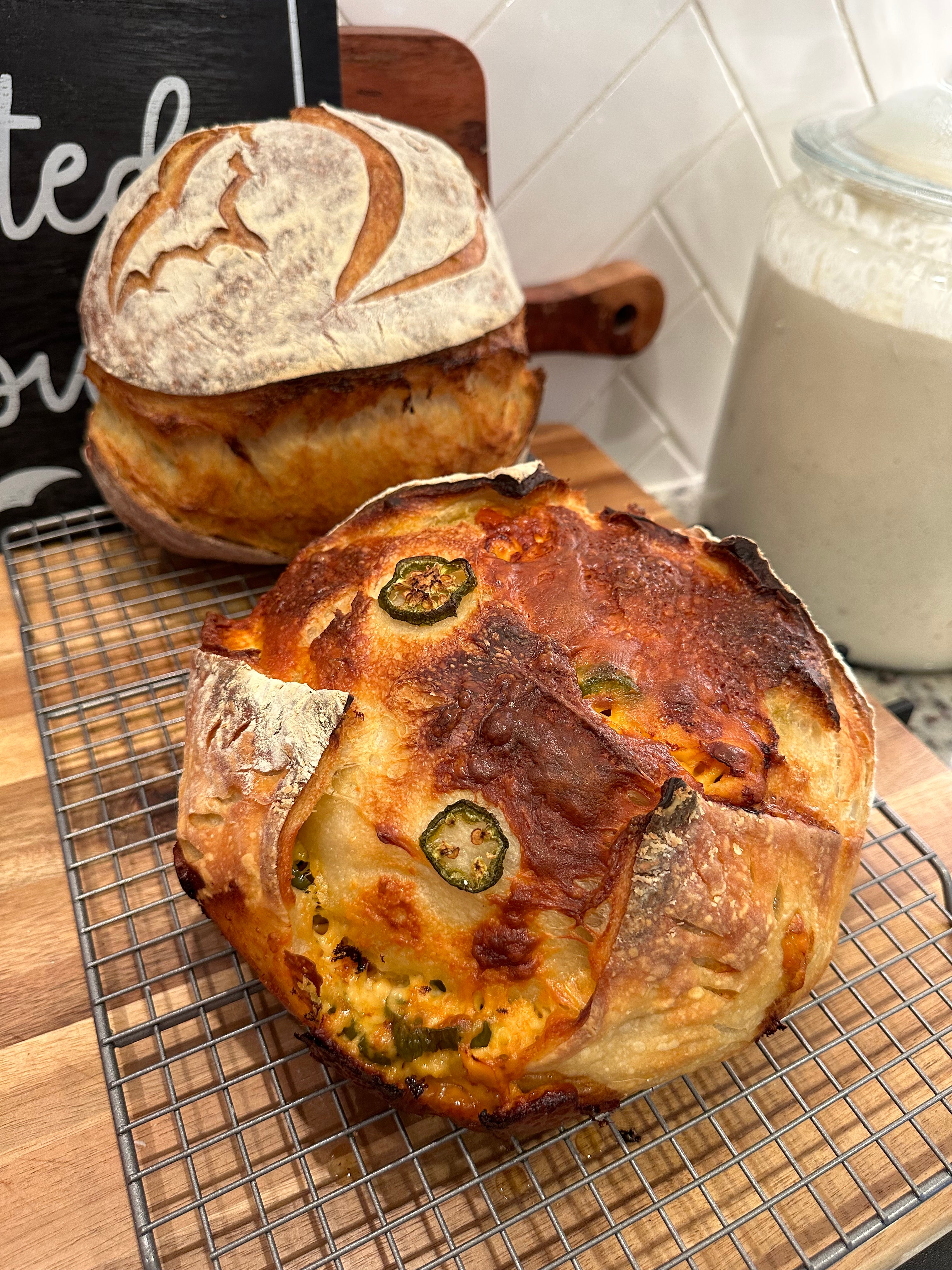
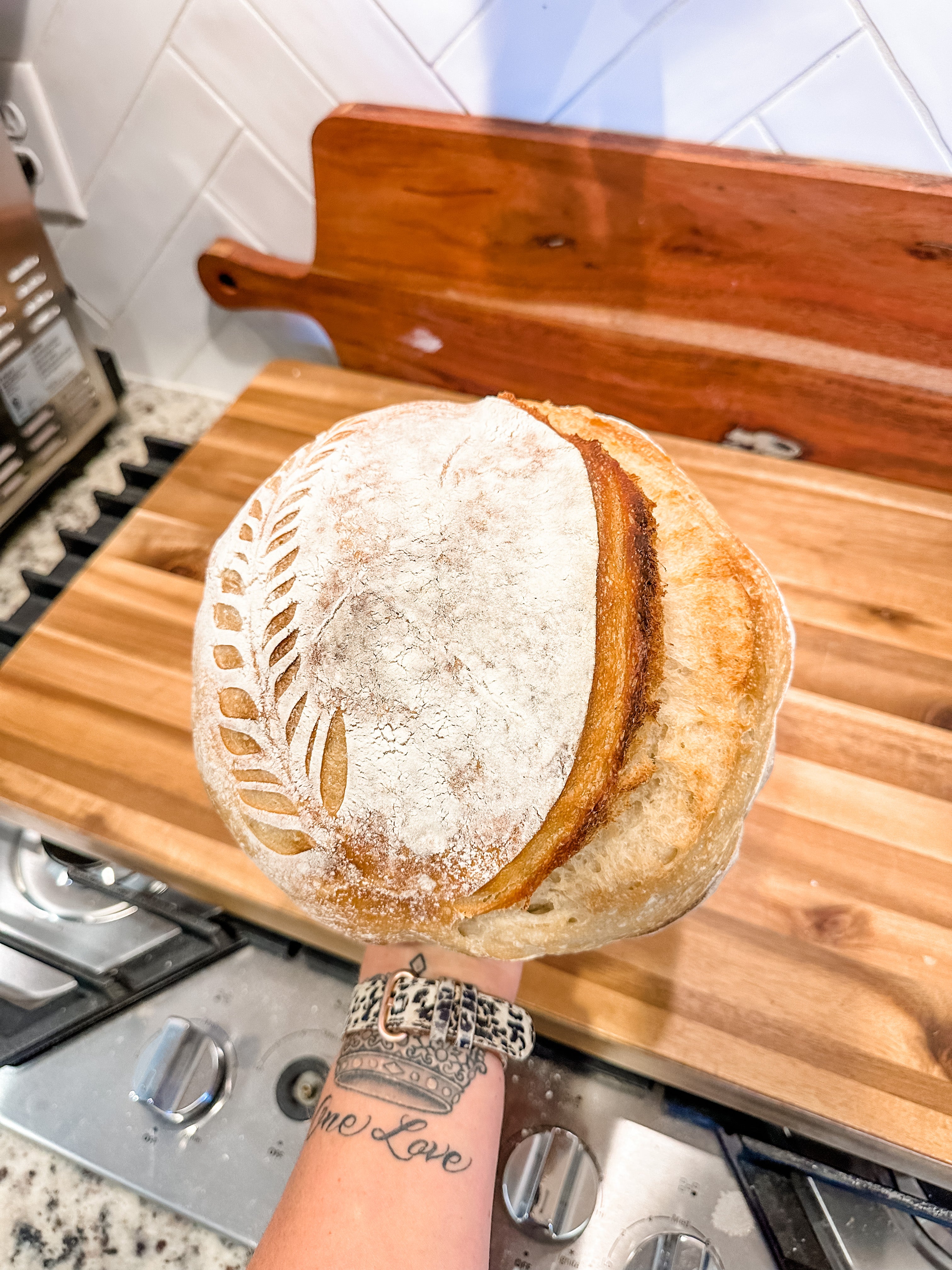
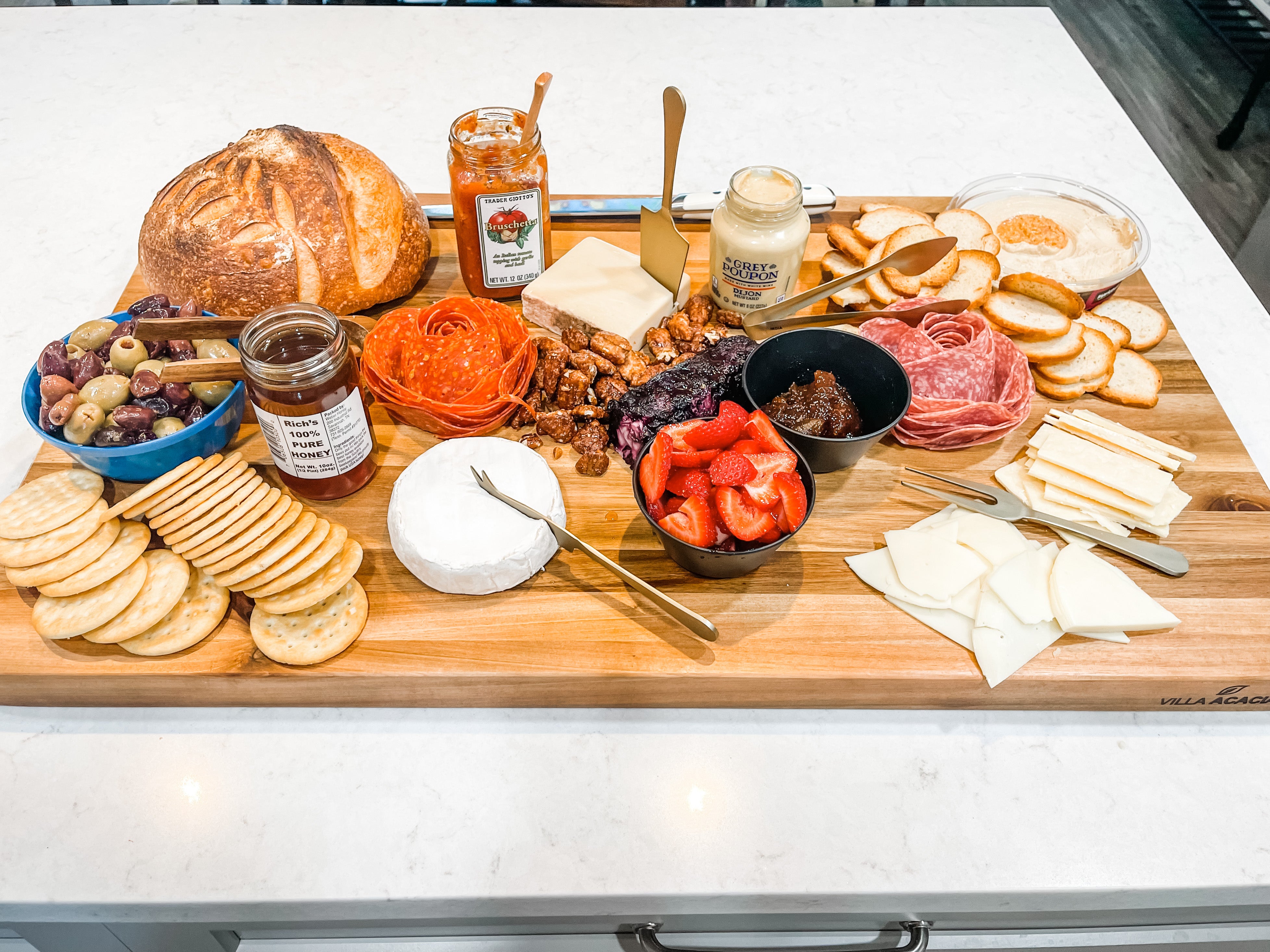
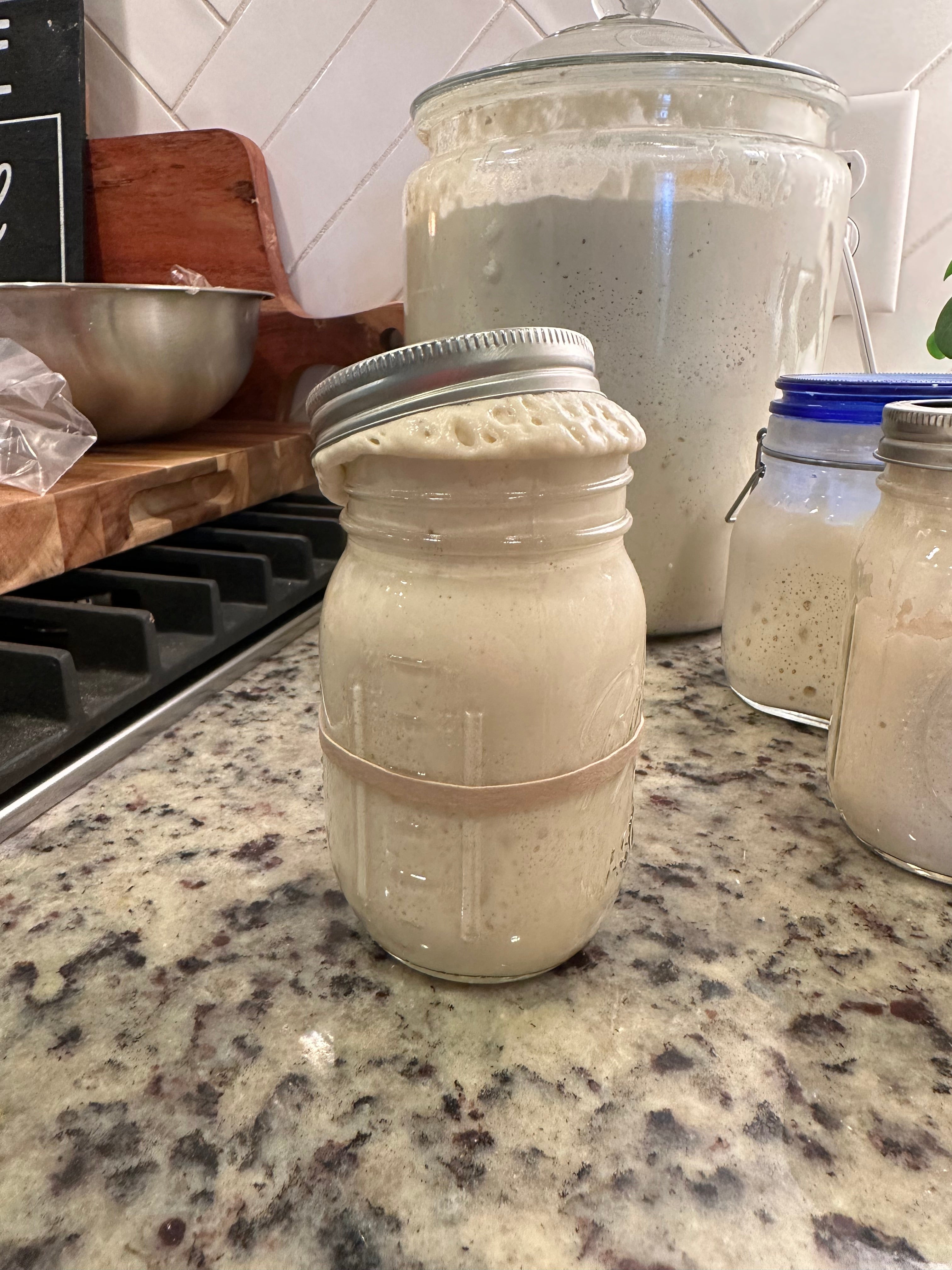
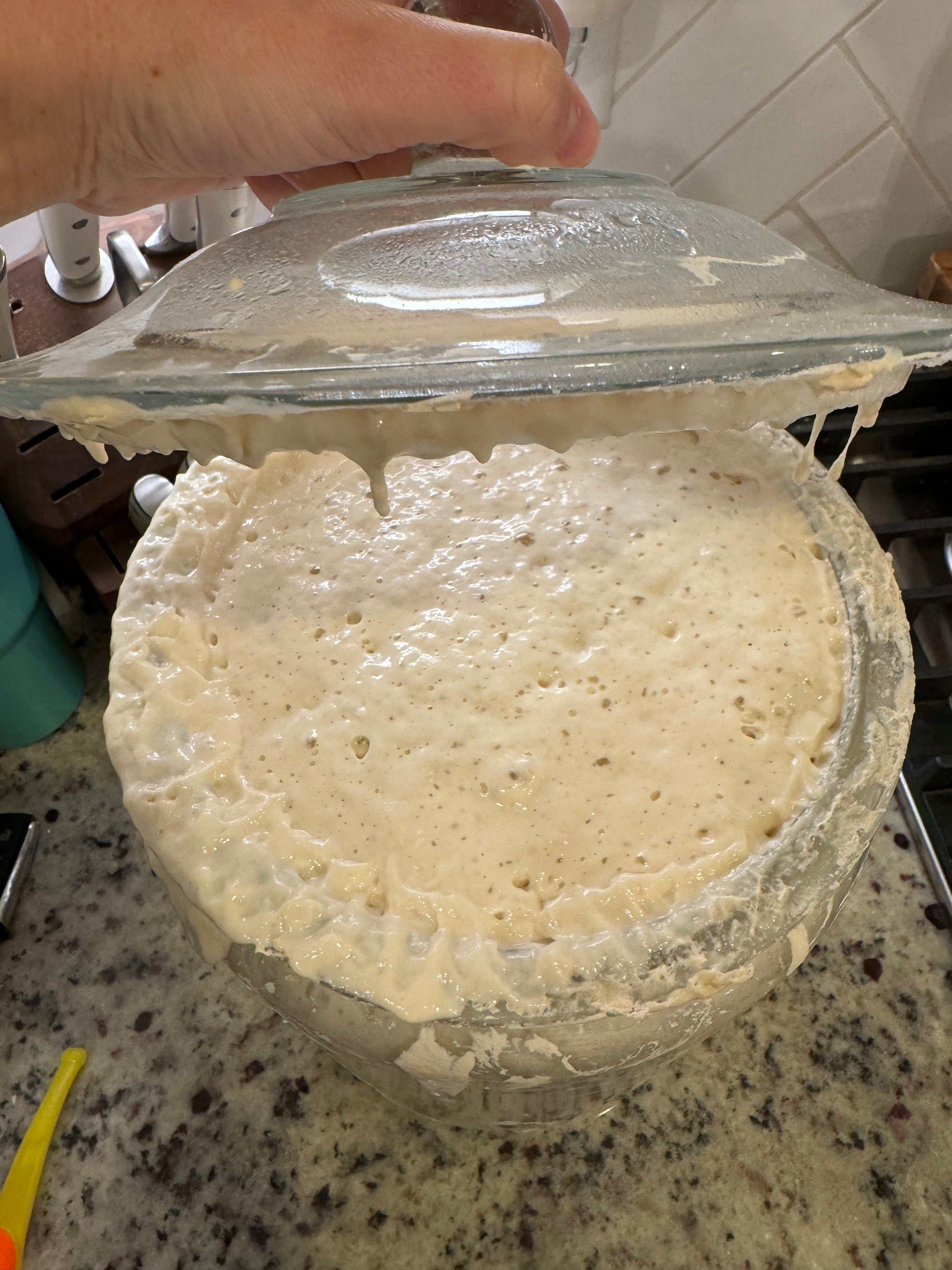
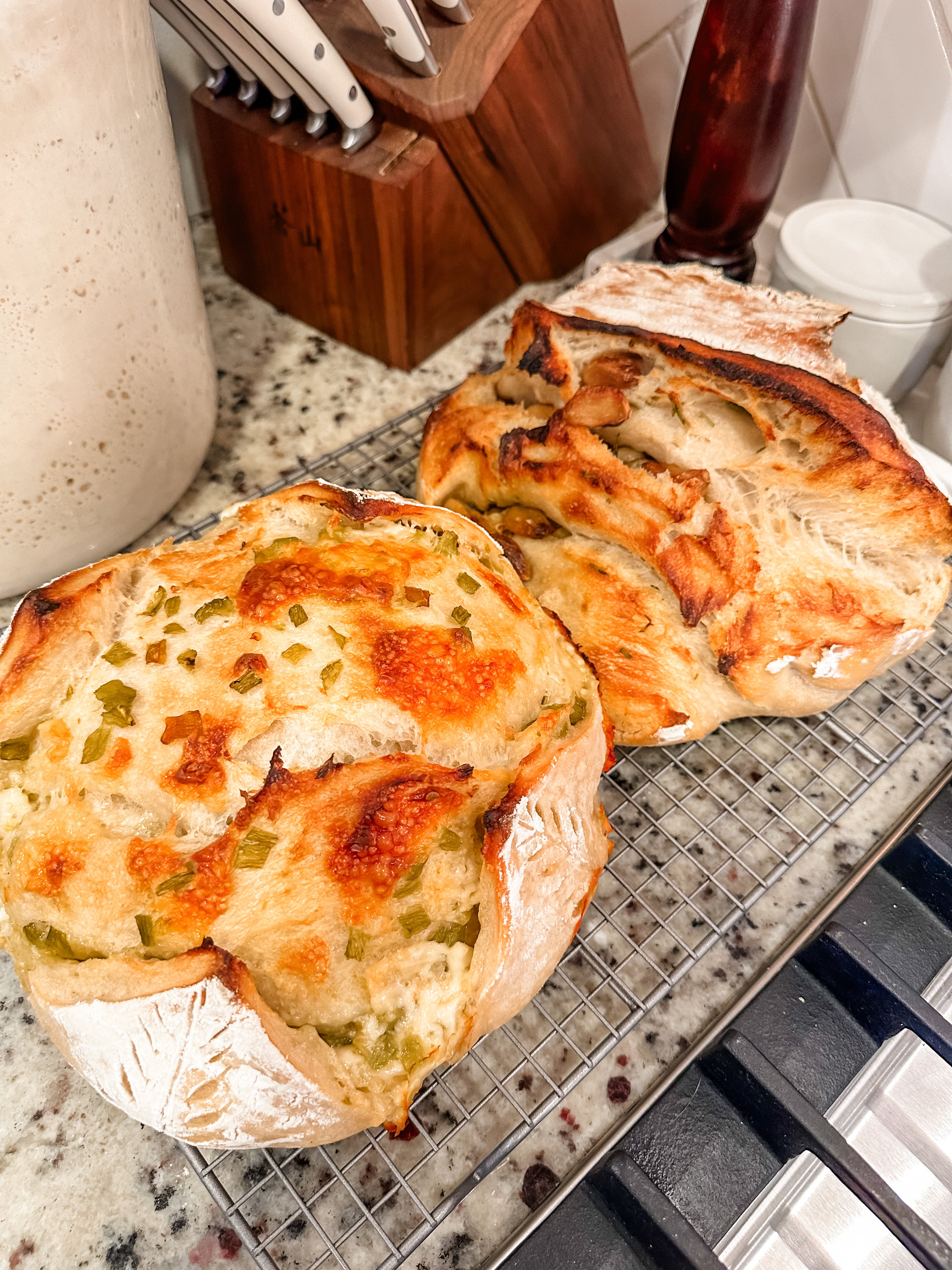
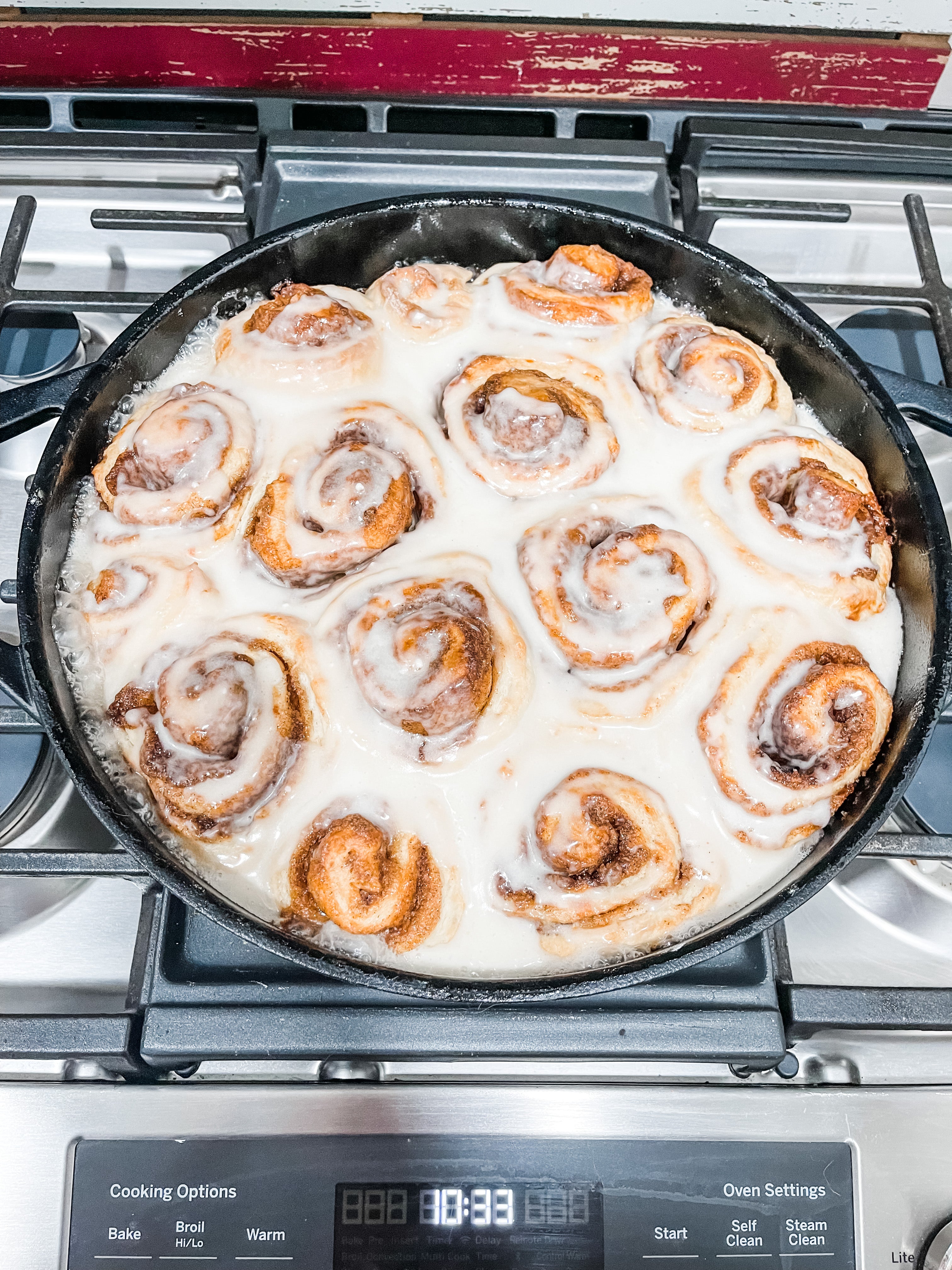
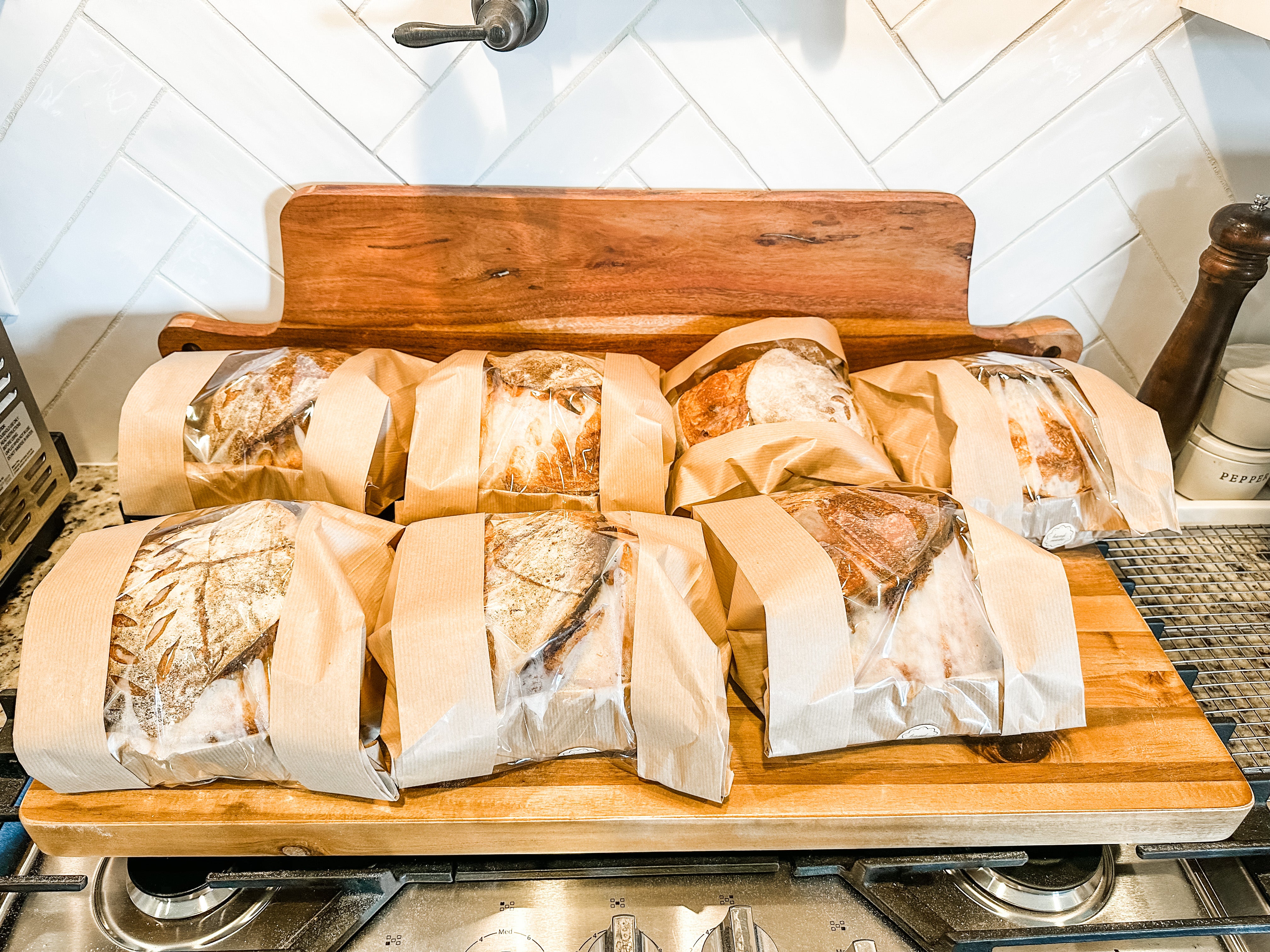
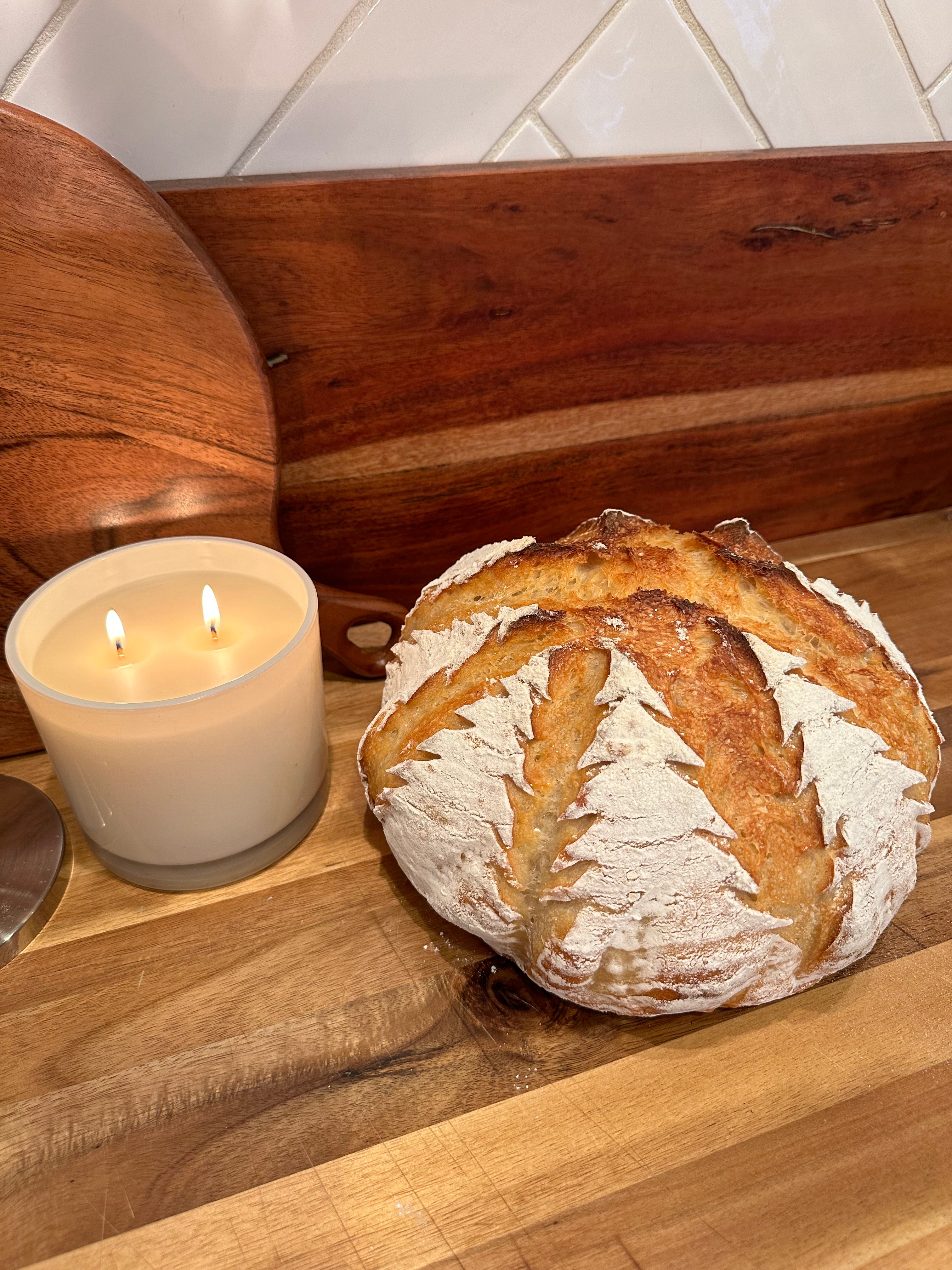
FAQ
Sourdough is a type of bread made from a naturally fermented dough, using wild yeast and lactic acid bacteria.
Sourdough fermentation breaks down gluten and phytic acid, making it easier to digest and increasing nutrient absorption.
The process usually takes 24 hours from feeding your starter to baking your loaf.
Bread flour is commonly used for its high protein content, but you can also use whole wheat or rye flour for added flavor and nutrition.
Yes, all-purpose flour can be used, but it may result in a less chewy texture compared to bread flour.
It should be bubbly, double in size within a few hours after feeding, and have a pleasant, slightly tangy smell.
Dense sourdough usually stems from improper fermentation timing or a weak sourdough starter. Make sure to be bulk fermenting your dough for the proper time for your environment. Remember cooler temps require longer fermentation timing. Warmer temps take less time to ferment the dough. Make sure to look for bubbles forming across the top of the dough, the dough has roughly doubled in size, the dough isn't overly sticky to the touch and it is nice a jiggly when you wiggle the bowl.
I find the best storing method for sourdough is in disposable paper bread bags.
Yes, you can use a baking stone or steel, a cast-iron skillet, or any oven-safe dish with a lid, or create steam in the oven.
You can store in the fridge to use for discard recipes like pancakes, pizza crust or crackers.
If kept at room temperature, feed it once a day. If refrigerated, once a week is sufficient.
The sour flavor comes from lactic acid produced during fermentation. Longer fermentation times typically result in a tangier taste.


